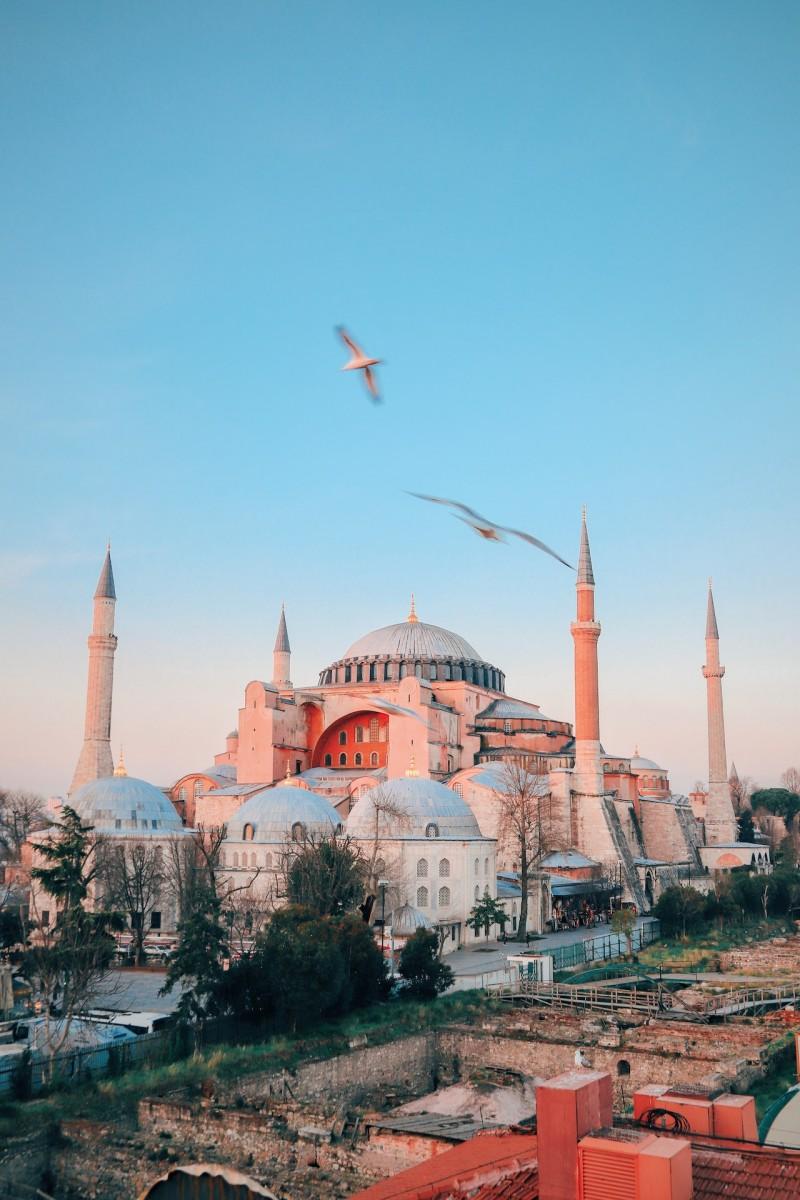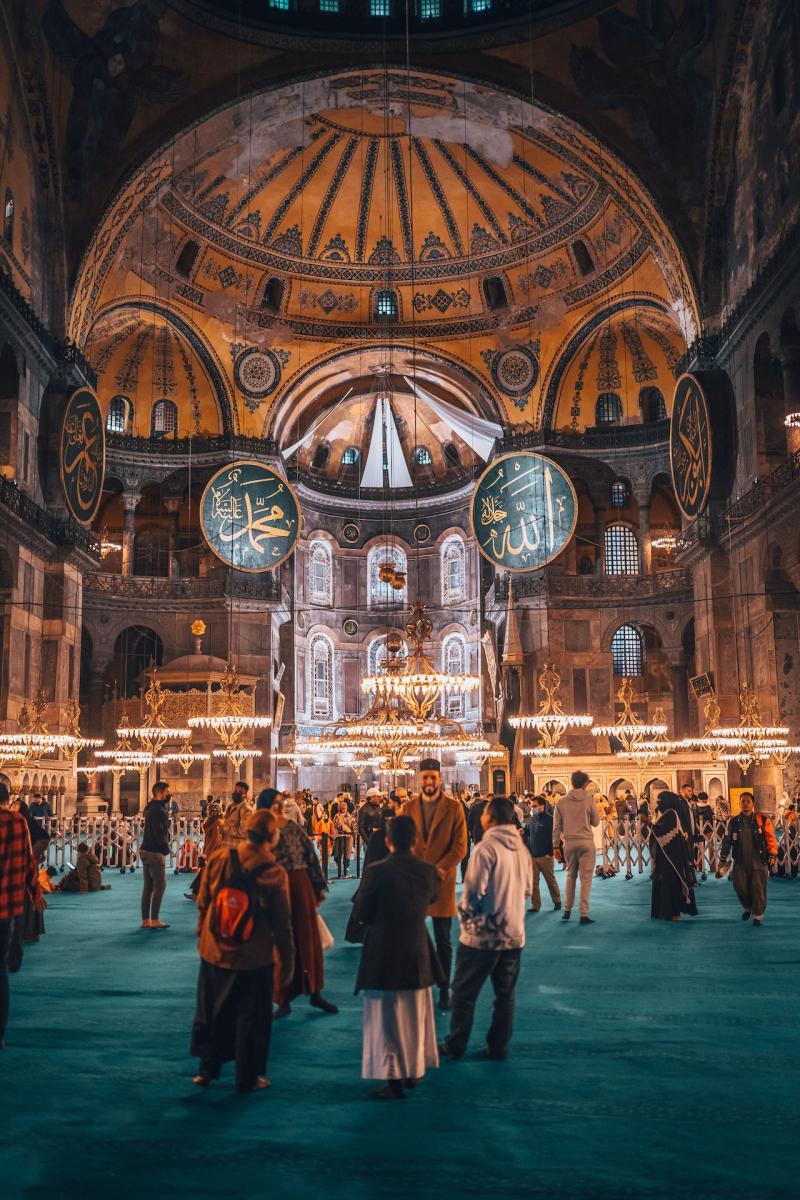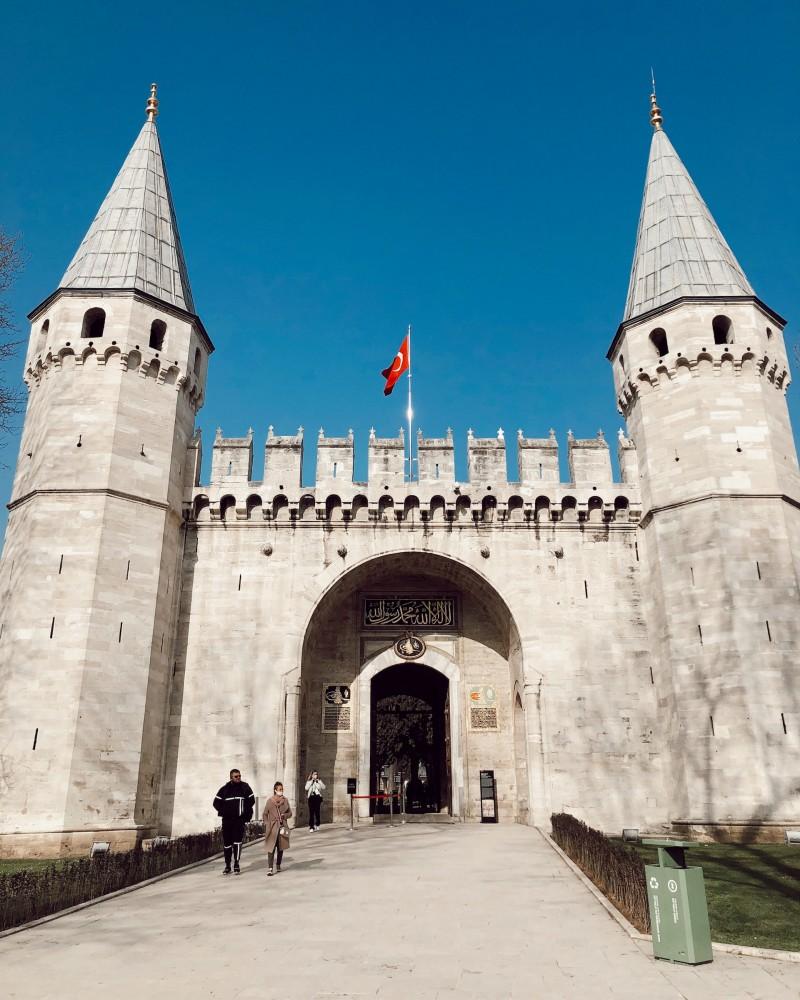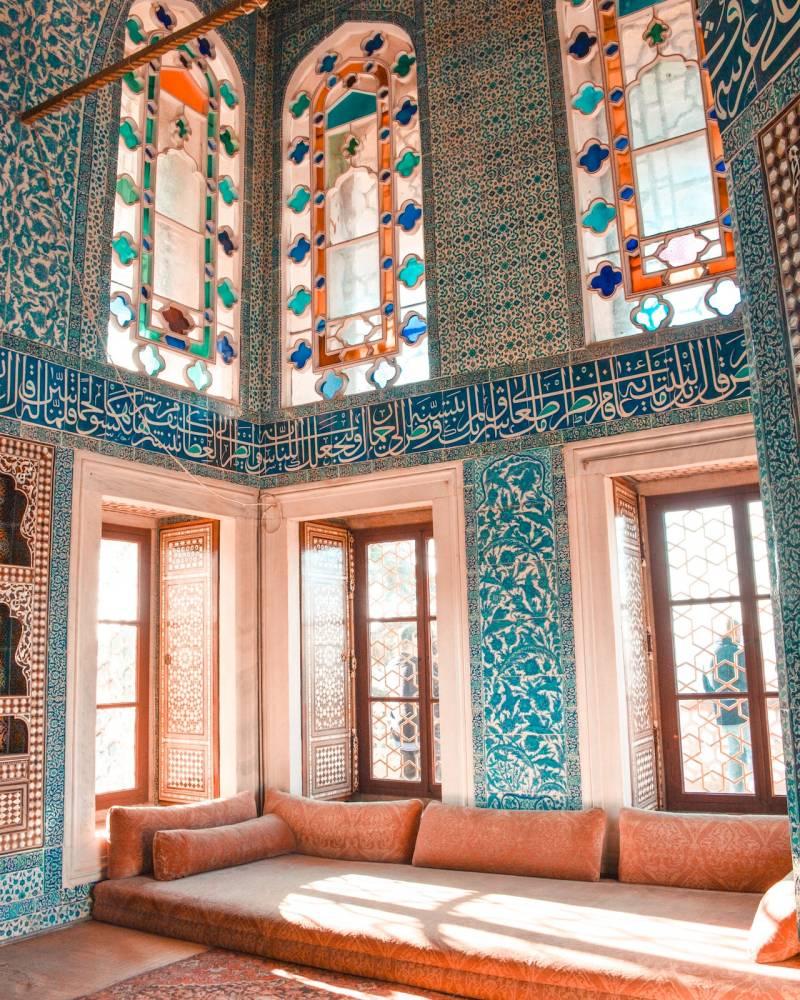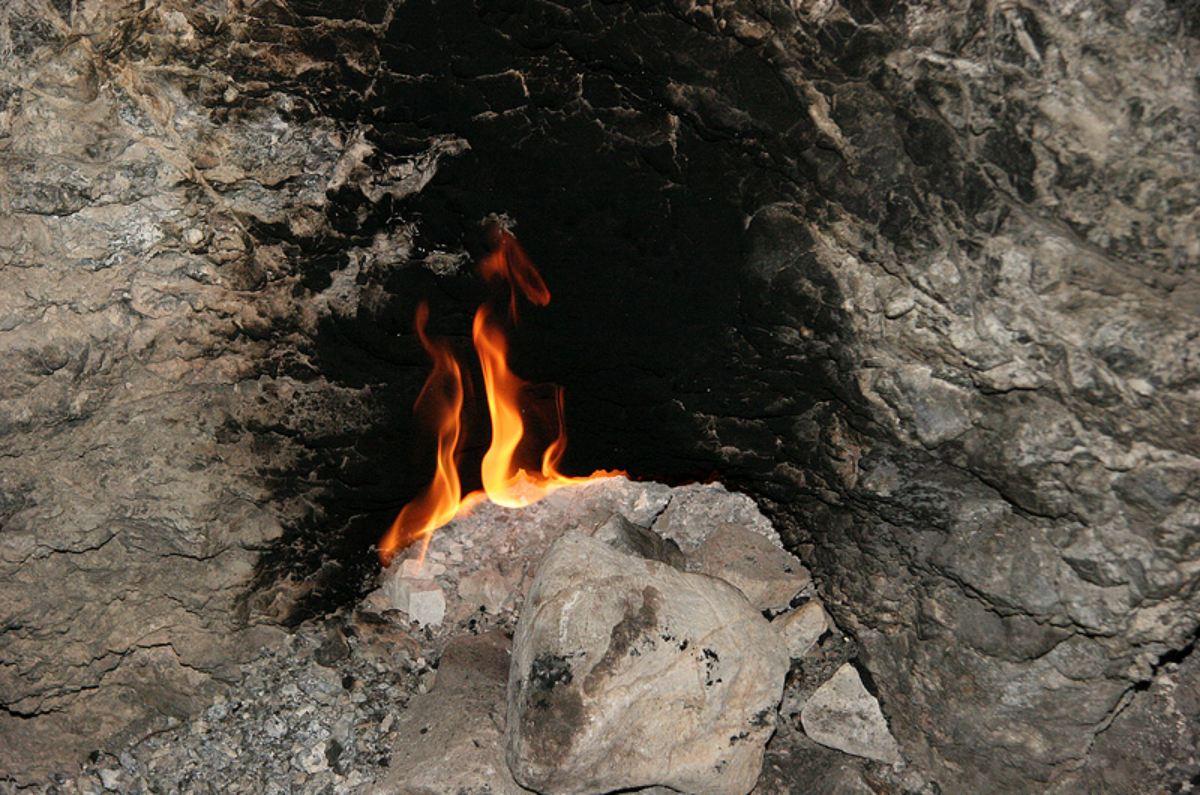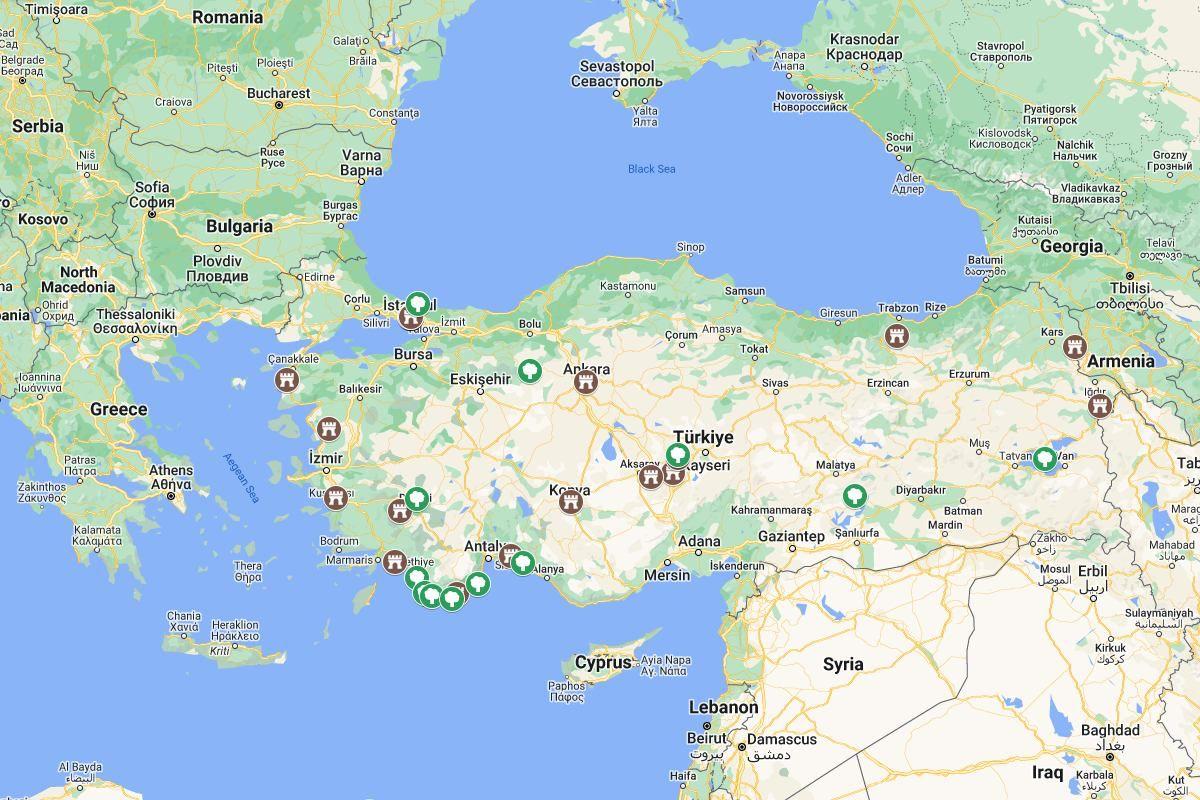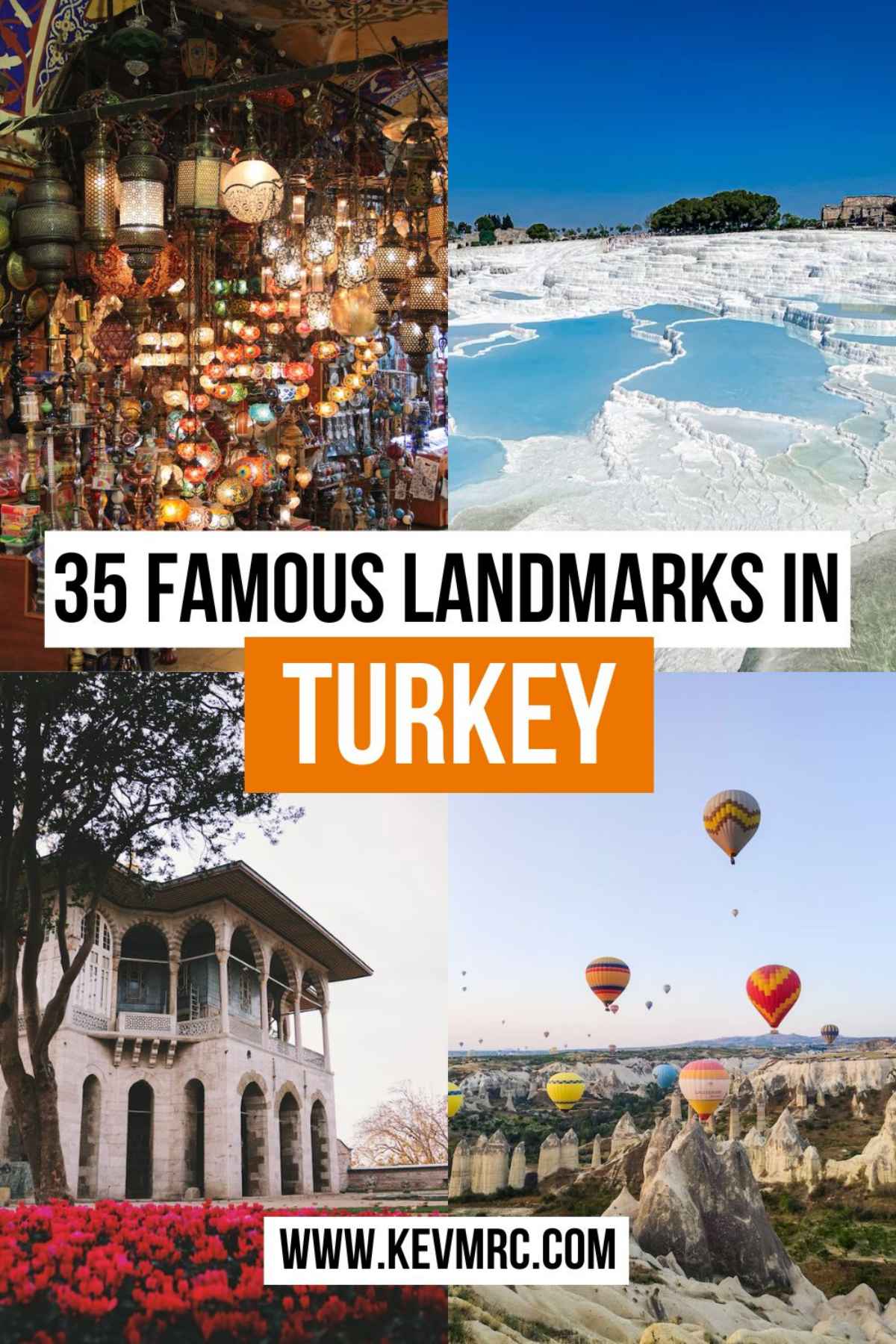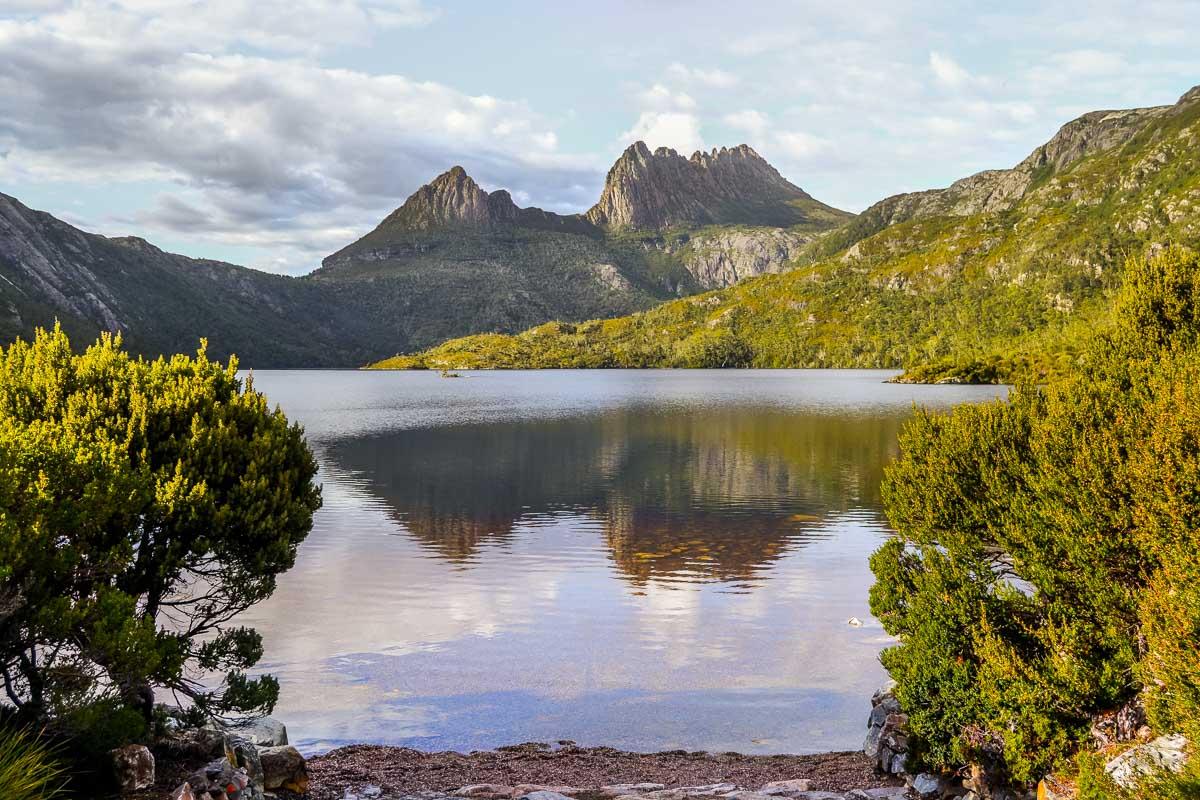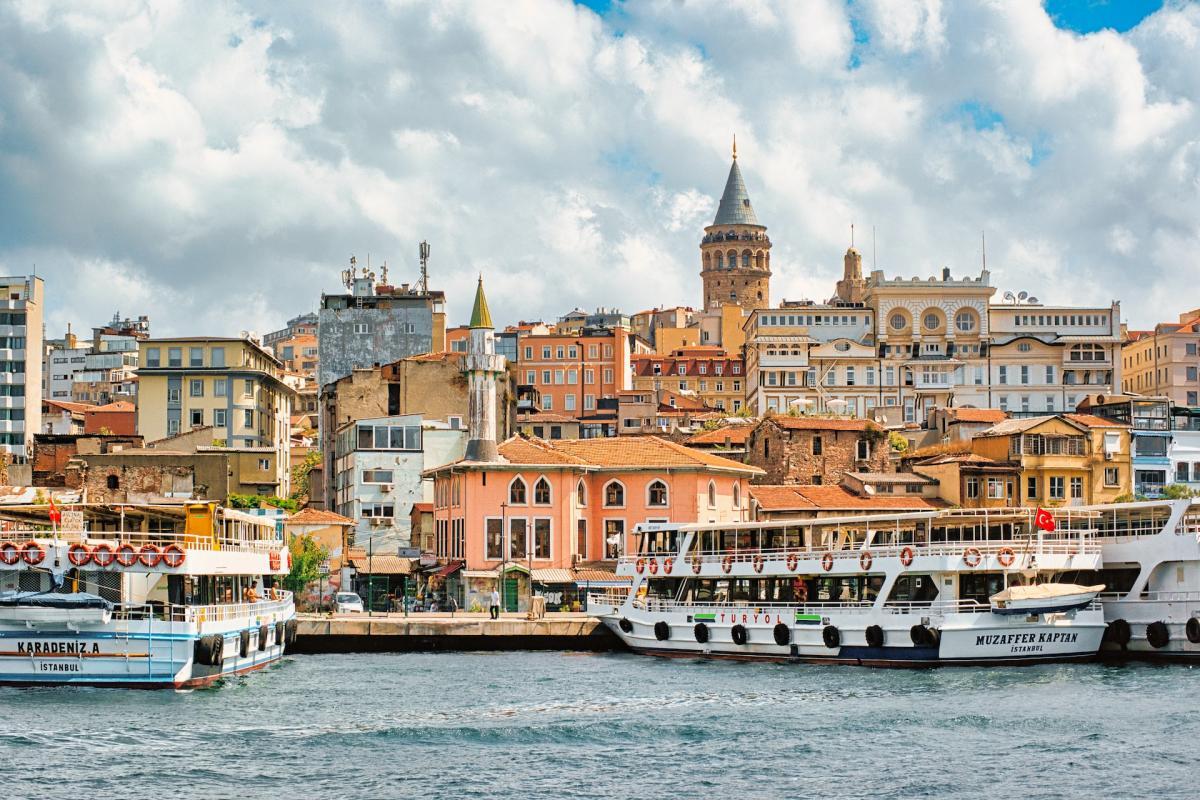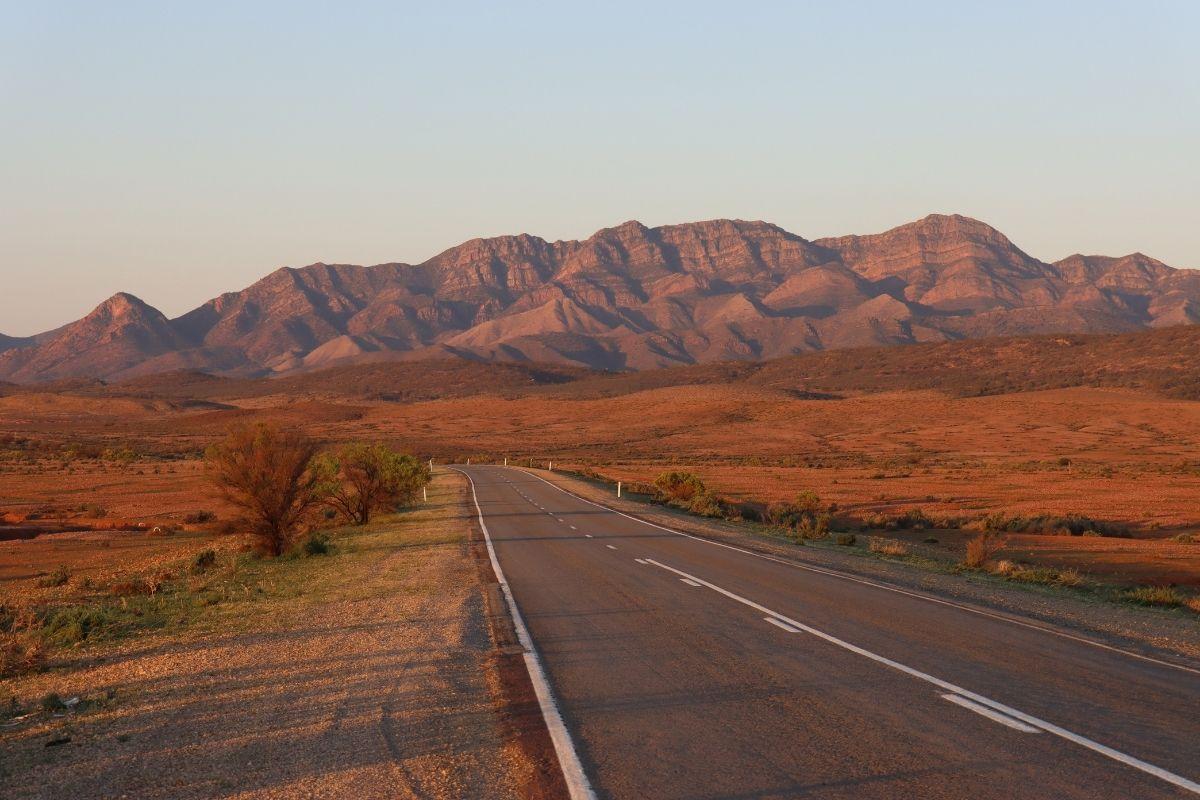35 Famous Landmarks in Turkey (100% worth a visit)
As the cradle of the world’s greatest civilizations, Turkey has a long and rich history that makes it a cultural hub and a prime destination.
Indeed, the country gathers everything you need for a complete trip: historical sites, seaside resorts, picturesque cities, hikes in exceptional regions, dreamy beaches, and even skiing in winter. There are so many things to see and do that you can go there all year round for a weekend, a week, or more.
Wondering what are the main highlights of this incredible land?
Discover in this post the 35 most famous landmarks in Turkey. 🇹🇷
Full List of the Famous Turkish Landmarks
To make it easier, we’ve divided the landmarks of turkey into 2 separate parts: first the manmade landmarks, and then the natural sites.
🏛 Famous buildings in Turkey:
- Hagia Sophia
- Topkapi Palace
- The Blue Mosque
- Galata Tower
- Dolmabahçe Palace
- Grand Bazaar
- Basilica Cistern
- Suleymaniye Mosque
- Ishak Pasha
- Ephesus
- Anitkabir
- Derinkuyu Underground City
- Aspendos
- Pergamum
- Mevlana Museum
- Sumela Monastery
- Ani
- Troy
- Myra Ruins
- Kaunos Tombs of the Kings
- Aphrodisias
- Selime Monastery
- Goreme Open Air Museum
🌳 Famous natural landmarks in Turkey:
- Pamukkale
- The Fairy Chimneys of Cappadocia
- Bosphorus Strait
- Mount Nemrut
- Manavgat Waterfalls
- Nallıhan Bird Sanctuary
- Lake Van
- Ölüdeniz Blue Lagoon
- Patara Beach
- Kaputas Beach
- The Burning Flames of Chimaera
- Kekova Island
Keep reading to learn more about each of these Turkey landmarks!👇
Famous Buildings in Turkey
Thanks to its history dating back to antiquity and from all times at the confluence of all cultures, the Turkish territory has inherited buildings and other constructions all more unique than the others.
To give you a glimpse of the magnitude of its human legacy, here are the 23 most famous monuments in Turkey.
1. Hagia Sophia
Hagia Sophia is certainly the most famous landmark in Turkey due to its breathtaking architecture of course, but also due to its unique history.
Indeed, Hagia Sophia was actually a church when it was built in the 6th century. But 916 years later in the 15th century, it became a mosque when the city fell to the Ottomans. It was exactly this religious switch that gave Hagia Sophia its extraordinary architecture mixing typical Christian elements such as the domes, with Islamic features like the minarets.
This Byzantine marvel of architecture is still a mosque today, and one of Istanbul’s symbols.
2. Topkapi Palace
Built in the 15th century, Topkapi Palace is located close to Hagia Sophia on Sultanahmet Square and is one of the major landmarks in Istanbul.
Topkapi Palace used to be the sultans’ main residence for about 400 years. It indeed welcomed 22 different sultans until the mid-19th century.
The royal palace consists of several buildings organized around 4 courtyards and is known for housing the Ottoman Empire’s most precious treasures. Visiting this wonderful palace is also a chance to get incredible views over Istanbul and its surroundings, as it overlooks the Bosphorus and the Golden Horn.
3. The Blue Mosque
The Blue Mosque is famous for being one of the most visited monuments in town and Istanbul’s largest mosque. The mosque indeed boasts no less than 13 domes and 6 minarets!
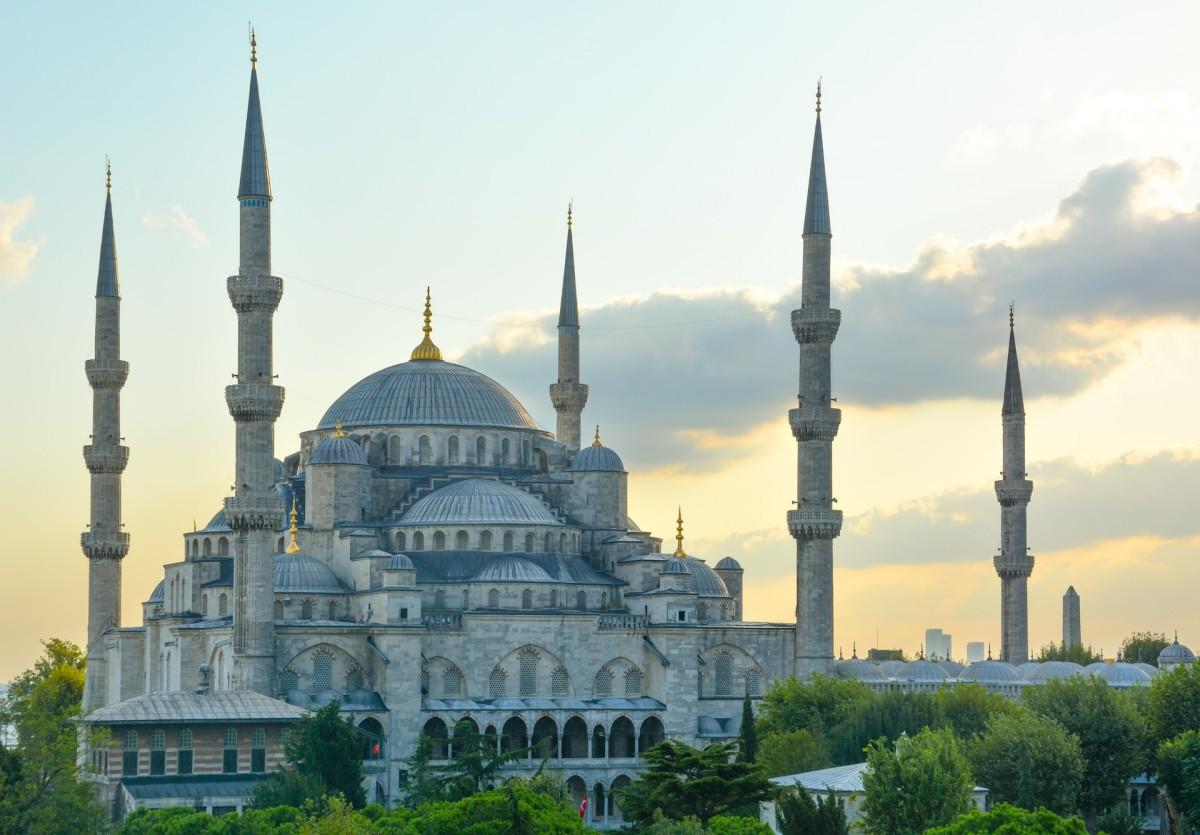
Built in the 17th century by the illustrious Ottoman architect Sinan, the mosque stirred up controversy at the time because no other mosque should have as many minarets as Mecca. This is the reason why a 7th minaret was added in Mecca later.
The Blue Mosque is outstanding both inside and outside. When entering, visitors are treated to a glittering shower of light filtered through hundreds of stained glass windows and to the intense blue ceramics of Iznik covering its walls.
4. Galata Tower
Standing on a hill on the western bank of Istanbul, the Galata Tower simply can’t be unseen as it dominates the whole city.
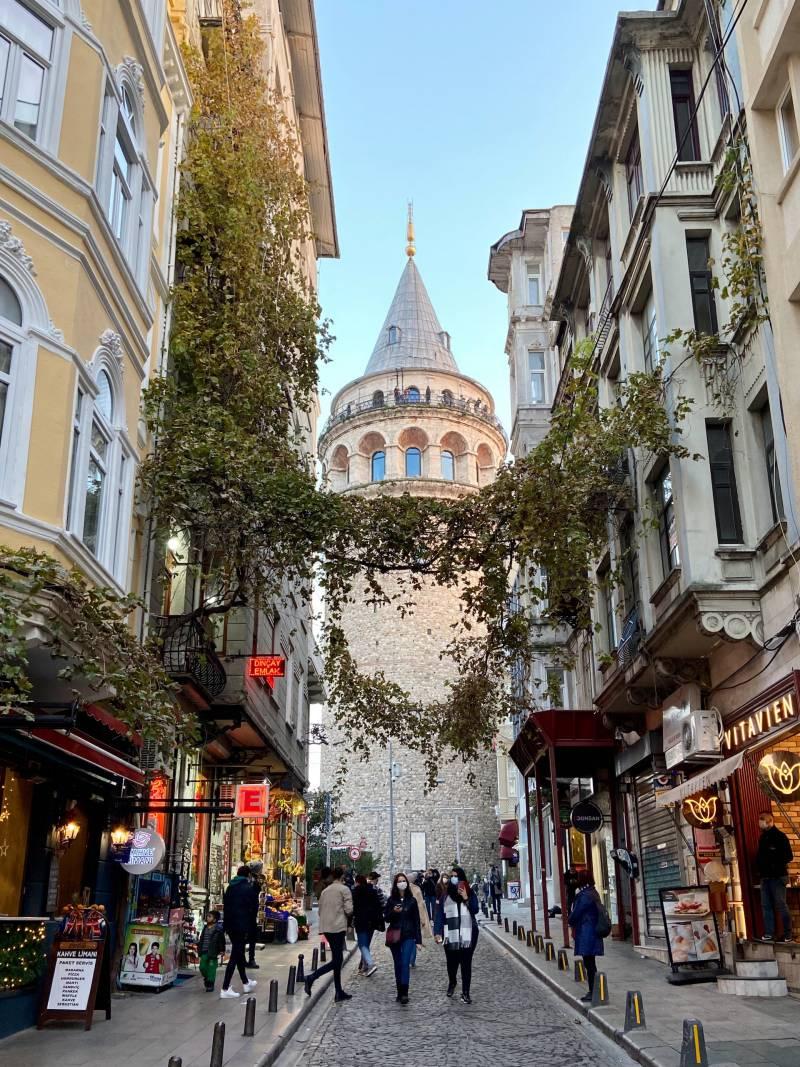
The Galata Tower was erected in the 14th century by the Genoese, at a time when the Byzantine Empire was severely weakened by the Crusades. The Genoese built ramparts to fortify the hill and topped it with this tower called then “The Chris Tower”. Over the centuries, the tower has had different uses as a watchtower, a prison, and an astronomy tower.
Raising at 67 meters with 9 floors, visitors like to climb it at sunset or at the time of the call to prayer to enjoy the beautiful panoramic view of Istanbul.
5. Dolmabahçe Palace
Dolmabahçe Palace is a massive building situated on the European shore of the Bosphorus in Istanbul.

Dolmabahçe Palace was built in 1854 to replace Topkapi Palace as the new royal residence. This project was driven by the sultans’ aspiration to modernize in the Western style, hence the rococo style of the palace. It housed successively 6 sultans and became the Ottoman Empire’s administrative center until 1922.
Dolmabahçe Palace has extraordinary features as it has 45 halls, 285 rooms, 70 toilets, and 6 gardens and covers nearly 15,000 square kilometers.
6. Grand Bazaar
Dating back to the 15th century, the Grand Bazaar is a true institution in Turkey and the world’s biggest covered market.
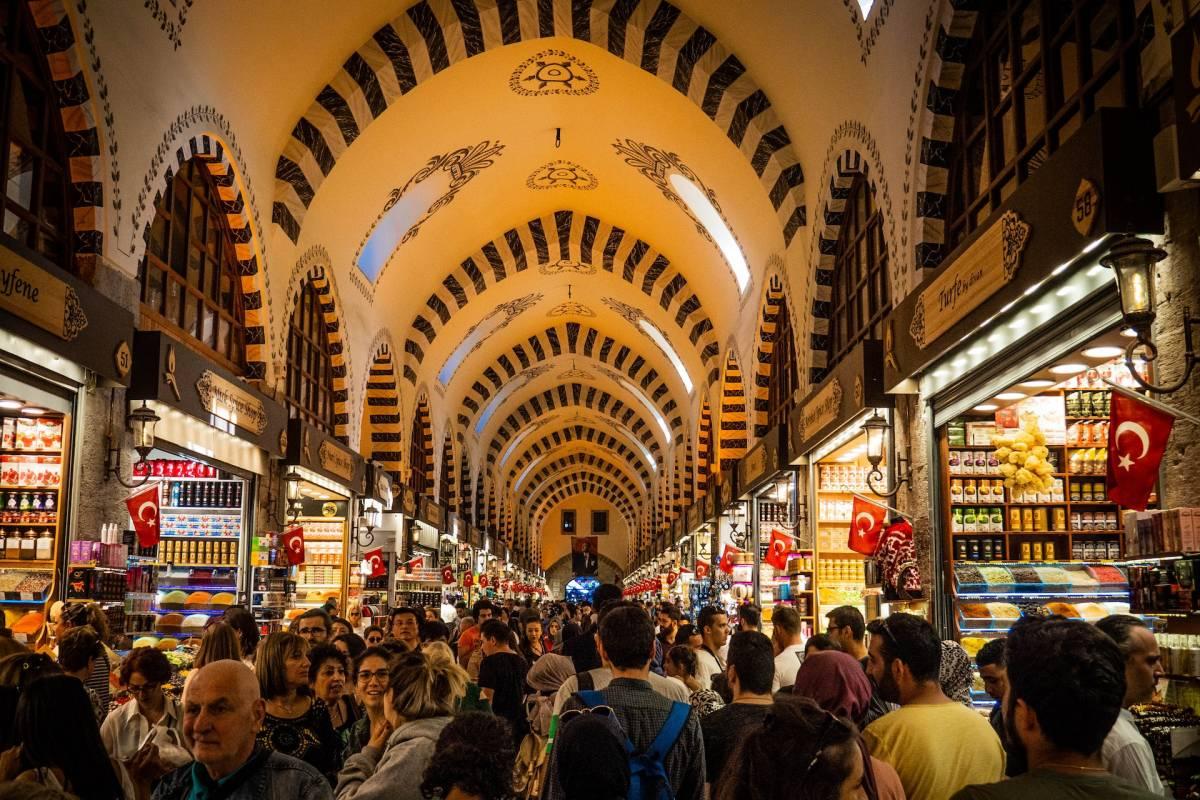
The figures related to the Grand Bazaar are indeed mindblowing: it is accessible via about 20 doors leading to 45,000 square meters of stalls including more than 3,000 stores with 2,000 people working there daily and up to 500,000 visitors a day.
If you want to buy souvenirs, the Grand Bazaar is of course the place to go. But the market is most famous for its beautiful craft items such as jewelry, leather, ceramics, or even carpets. But be ready to bargain as it is a tradition inside the Grand Bazaar!
7. Basilica Cistern
Built under Emperor Justinian in the 6th century, the Basilica Cistern is a marvel of Byzantine ingenuity located hundreds of meters under Istanbul.
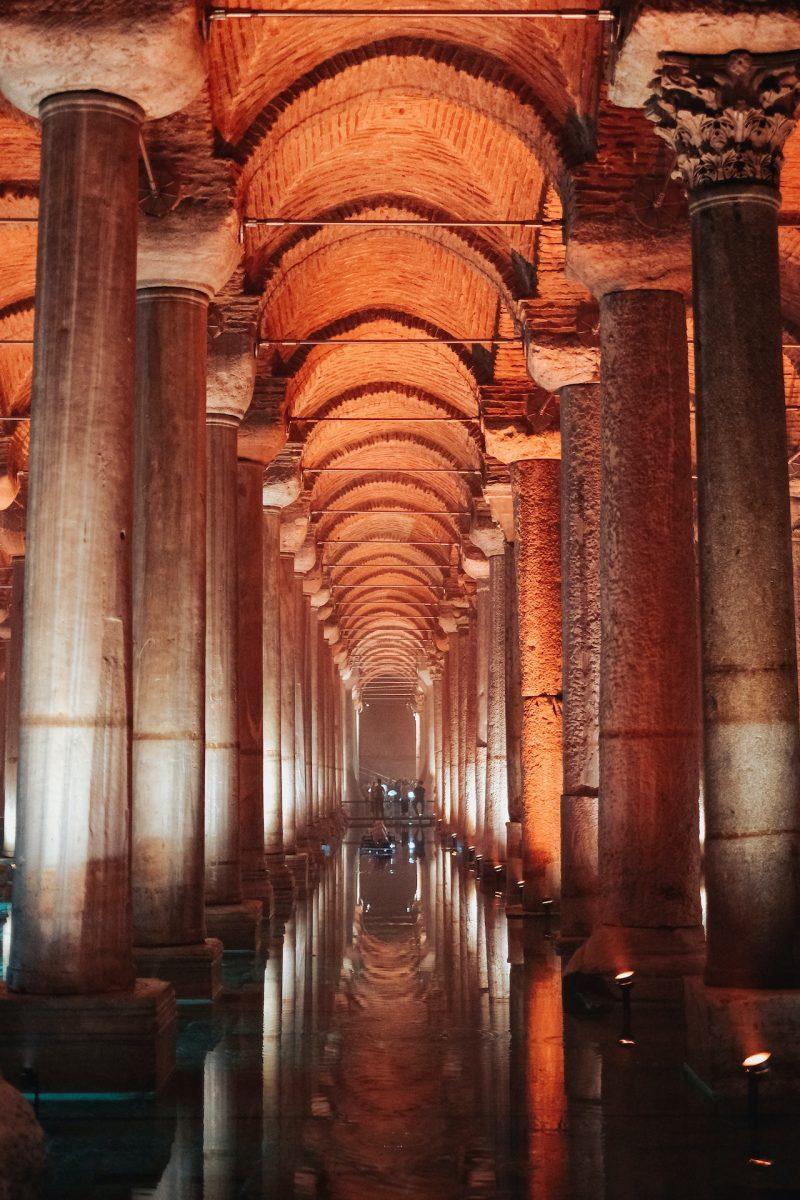
The Basilica Cistern aimed to store clean water coming from the aqueducts, especially to supply the water needs during the Constantinople sieges and the summer seasons. Left abandoned for years, it wasn’t until 1968 that the city of Istanbul undertook major renovation works. The 1985 rehabilitation work allowed the cistern to welcome visitors.
Inside the Basilica Cistern, the atmosphere is unique, a little romantic but scary at the same time. A must-see if you’re visiting Istanbul!
8. Suleymaniye Mosque
Suleymaniye Mosque is another of the many UNESCO-listed sites in Istanbul and a jewel of Ottoman architecture.
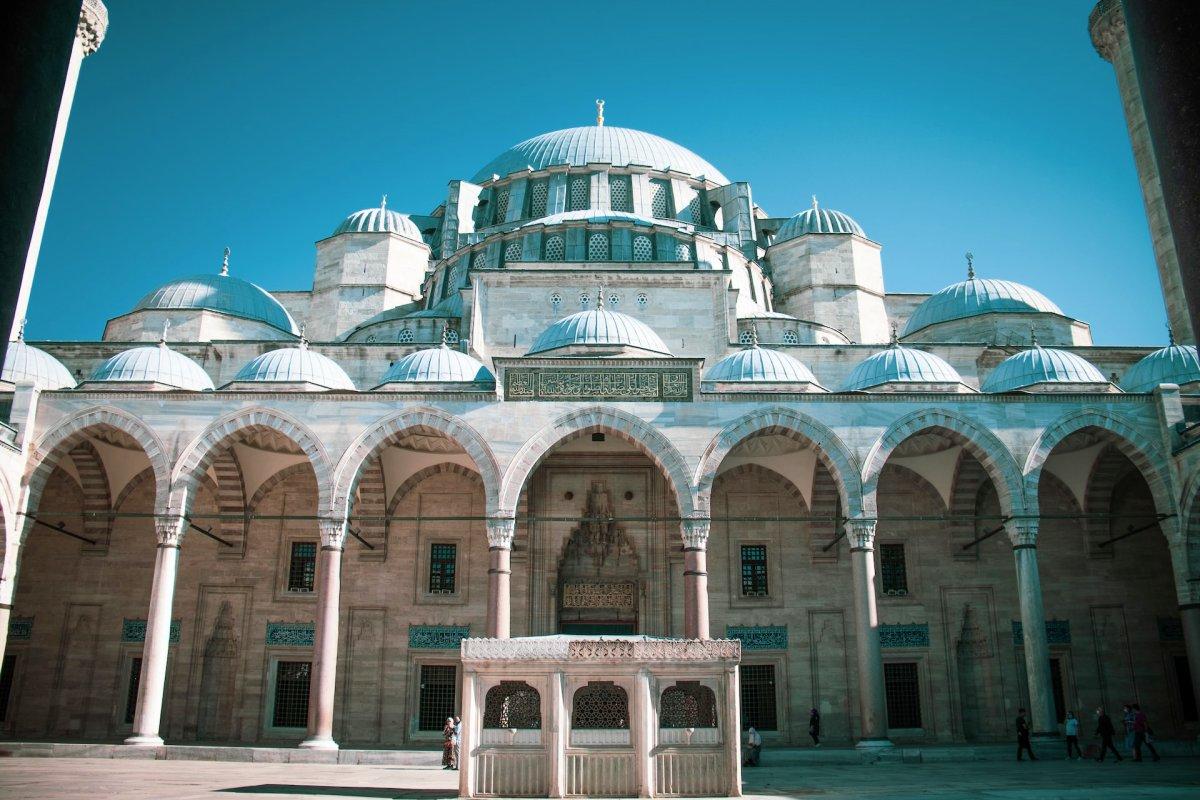
Designed by the great architect Sinan in the 16th century, Suleymaniye Mosque has an exceptional location on a hill dominating the Golden Horn and the whole city of Istanbul.
Suleymaniye Mosque is actually much more than a worship place as it also houses a hospital, a library, a Koranic school, a hammam, and other buildings. All these features together make this monument a very unique place.
9. Ishak Pasha
Located in Eastern Turkey in Agri in the heart of the desert at an altitude of over 2000 meters, the Ishak Pasha Palace is one of the most remarkable examples of Ottoman architecture.
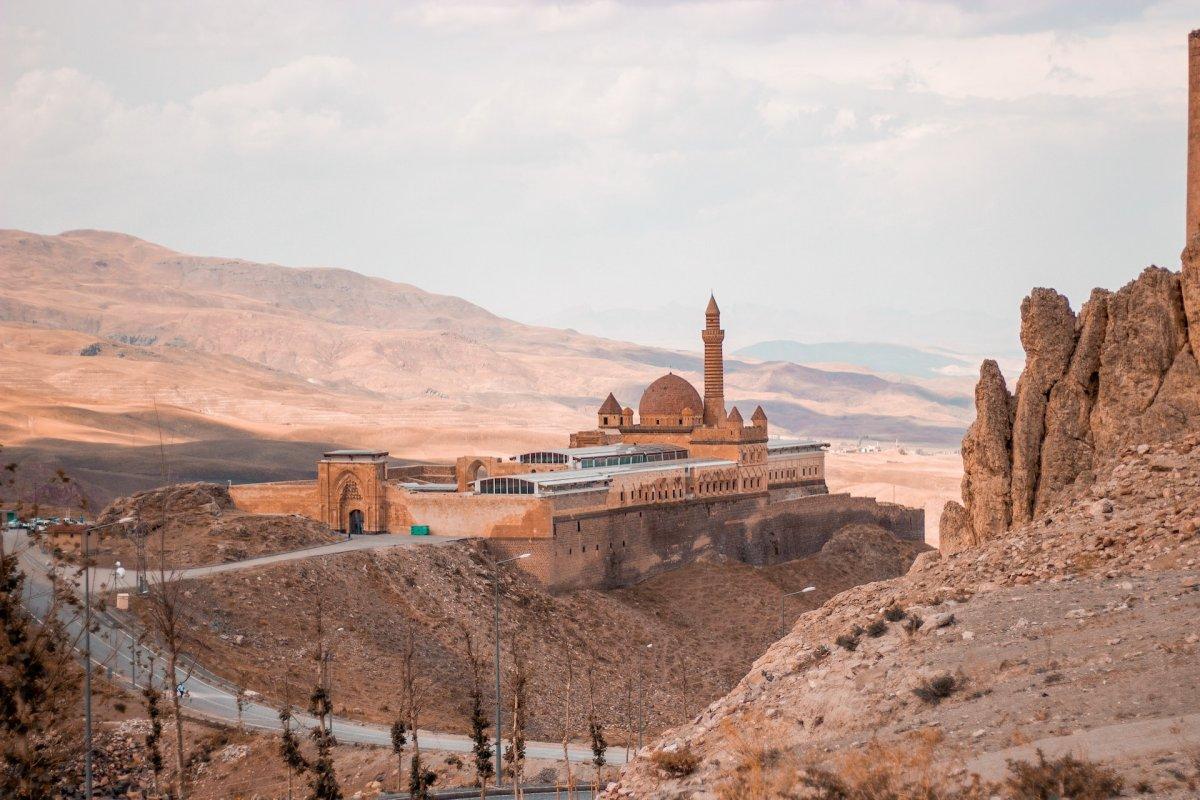
Ishak Pasha built the palace and its mosque in 1685 on the Silk Road. Here, Armenian, Persian, Georgian, Seljuk, and Ottoman styles blend harmoniously. Its architecture was revolutionary for its time as it was equipped with central heating, running water, and a sewage system.
This palace impresses not only by its beauty but also by its setting as it lies in an arid environment between the rocky mountains of pink, green, brown, and yellow colors.
10. Ephesus
Located not far from the city of Izmir and classified as a UNESCO World Heritage Site, Ephesus is one of the major archaeological sites in Turkey.
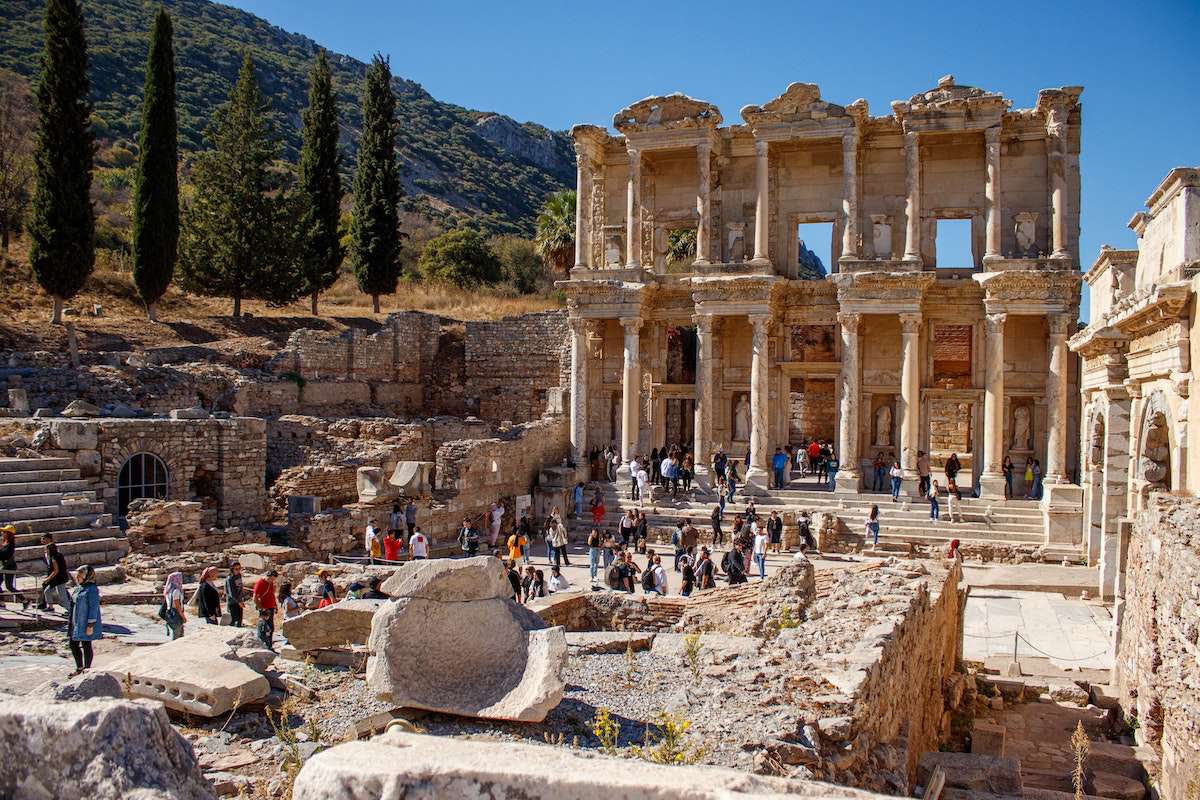
In the ancient world, Ephesus is famous for having hosted the temple of Artemis, one of the seven wonders of the world. Today, only a few vestiges remain.
Beyond this, Ephesus is a unique testimony of a Roman city in Anatolia. Yet having origins dating back to the Neolithic, it is by far the best preserved of the region. The best-conserved monument is the library of Celsus, the most famous image of Ephesus.
11. Anitkabir
Located in Ankara (the Turkish capital) Anitkabir is the mausoleum of Mustafa Kemal Atatürk, founder and first president of the Republic of Turkey from 1923 to his death in 1938.
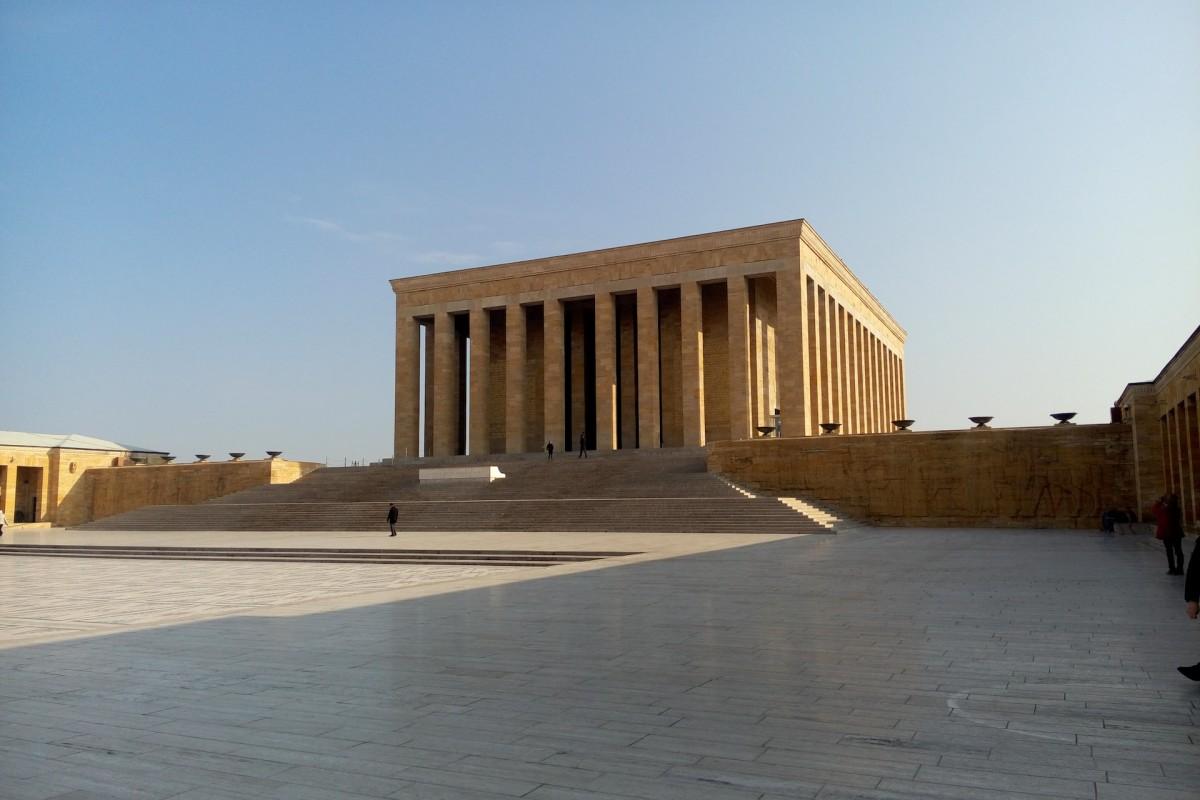
In the absence of a burial place worthy of such a man, an international competition was organized by the Turkish government to design Ataturk’s tomb. It was finally built in 1953 on a hill overlooking the city of Ankara at an altitude of 906 meters.
Covering 120, 000 square meters, the mausoleum complex consists of 3 elements: the lion’s alley, the ceremonial square, and the tomb. With a capacity of 15,000 people, the ceremonial square hosts all major national celebrations.
12. Derinkuyu Underground City
The underground city of Derinkuyu, connected to that of Kaymakli, is located in Cappadocia, this Anatolian region known for its atypical and lunar landscapes.
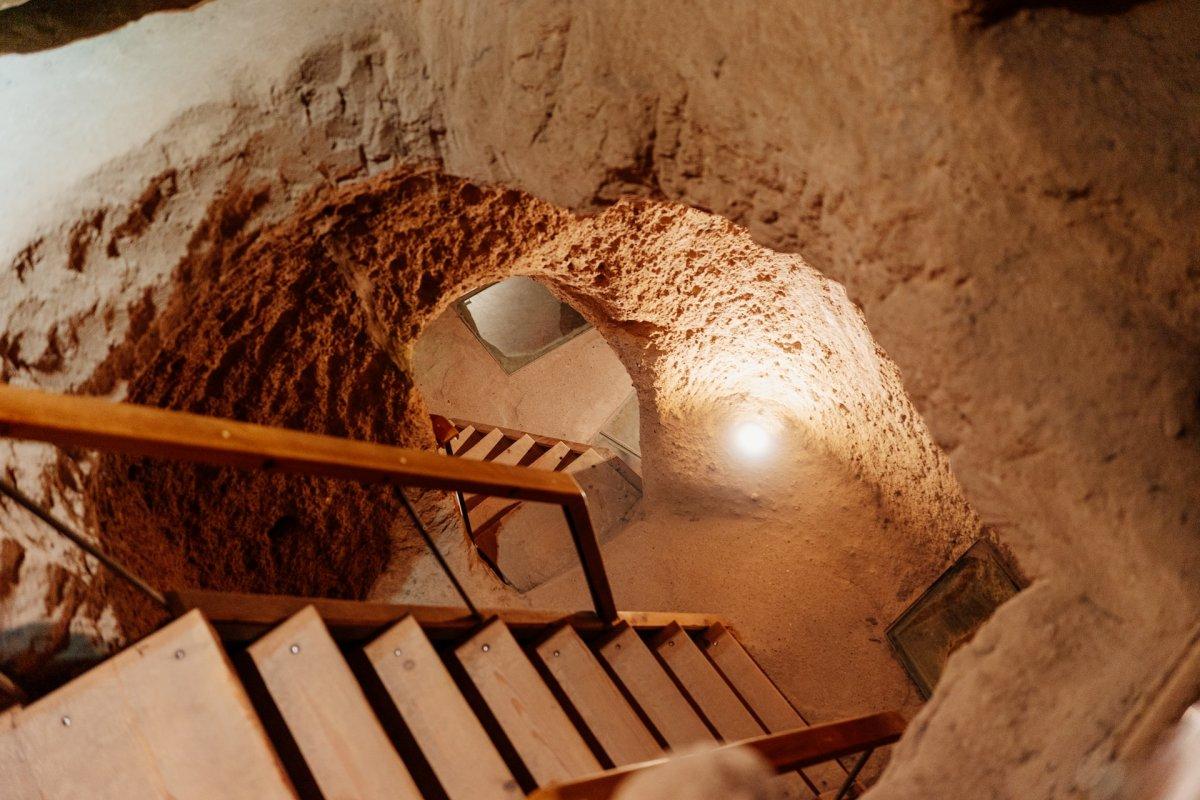
Derinkuyu was used as a refuge to protect from invasions. Those who worked on its construction were the Hittites in the 2nd century BC, the first civilization to have entered Anatolia. However, the Hittites were defeated by the Phrygians and then by the Christians who used Derinkuyu to protect themselves from persecution by the Roman Empire.
The world owes the discovery of Derinkuyu somewhat to chance when in 1963, a local man came face to face with an entire underground city during an urban transformation project. The works were of course immediately interrupted to give way to great archaeological excavations.
13. Aspendos
Aspendos is a city in the province of Antalya well known for its ancient theater.
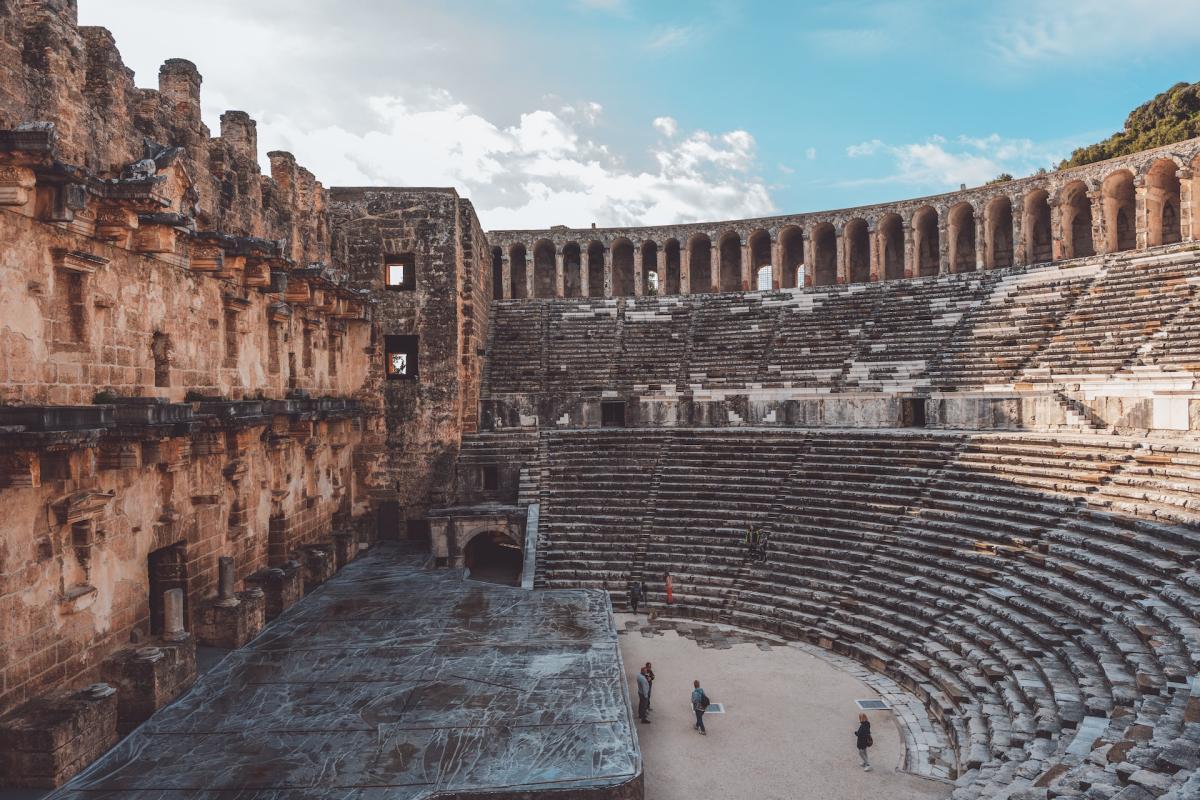
Founded by the Achaeans 10th century BC, Aspendos is one of the richest and most prosperous cities of the ancient period. The theater of the city was built under Marcus Aurelius in the Roman period in the 2nd century, so its construction follows the principles of Roman architecture.
Today it is the most important and best-preserved Roman theater in Asia Minor. Every year, thousands of Turkish and foreign tourists visit the Aspendos theater, which is also used for music festivals.
14. Pergamum
Pergamum is another archaeological site located very close to Bergama in the northwestern part of the country. Visiting Pergamum allows you to discover many remains, the most important being the amphitheater.
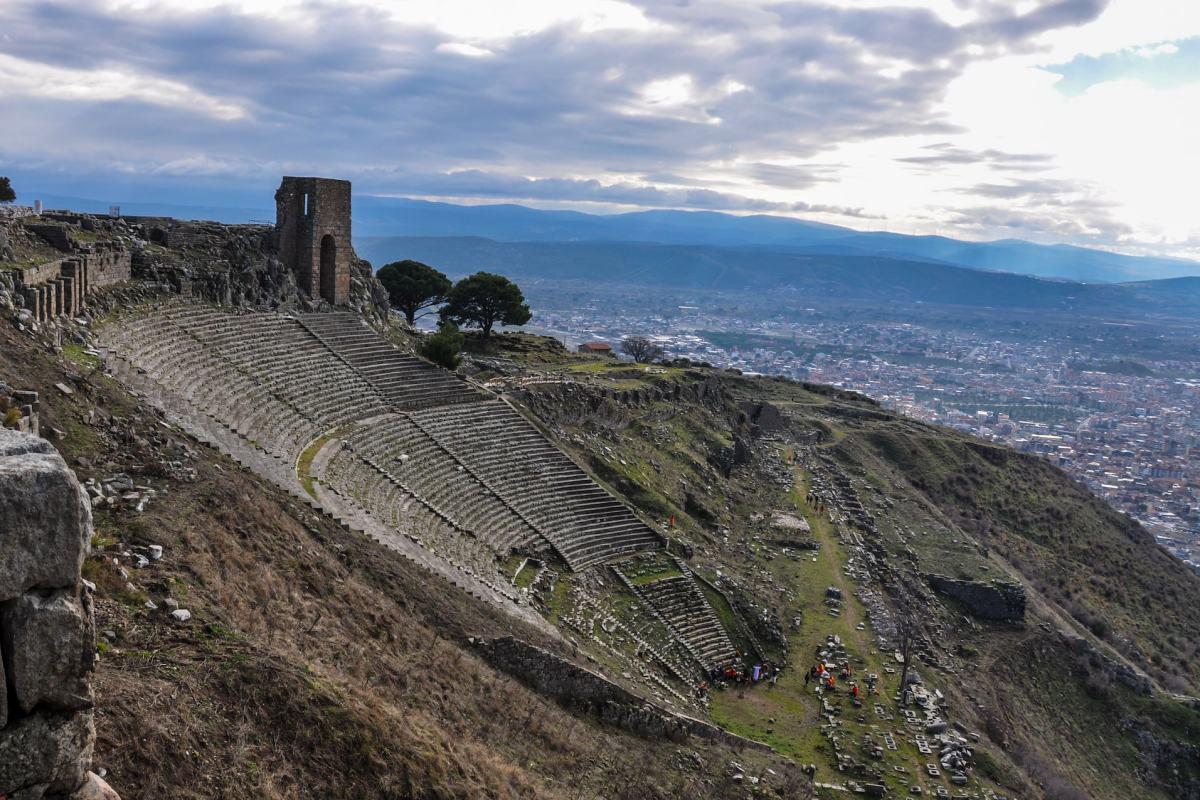
According to legend, the city was founded by Pergamus, one of Andromache‘s sons, the legendary princess of Troy. Built on a hill at 350 meters, the city of Pergamum was a major center of Hellenistic culture with a population of about 150,000 to 200,000 in the 2nd century AD.
Its geographical location is unique and allows you to enjoy the view once you are there. The most important monument of Pergamon, its great altar, is kept in the Pergamonmuseum in Berlin.
15. Mevlana Museum
In the heart of the old city of Konya in Central Anatolia at an altitude of over 1000 meters, the Mevlana Museum houses the mausoleum of the famous poet and philosopher Jalal al-Din Rumi and is therefore a major pilgrimage site.
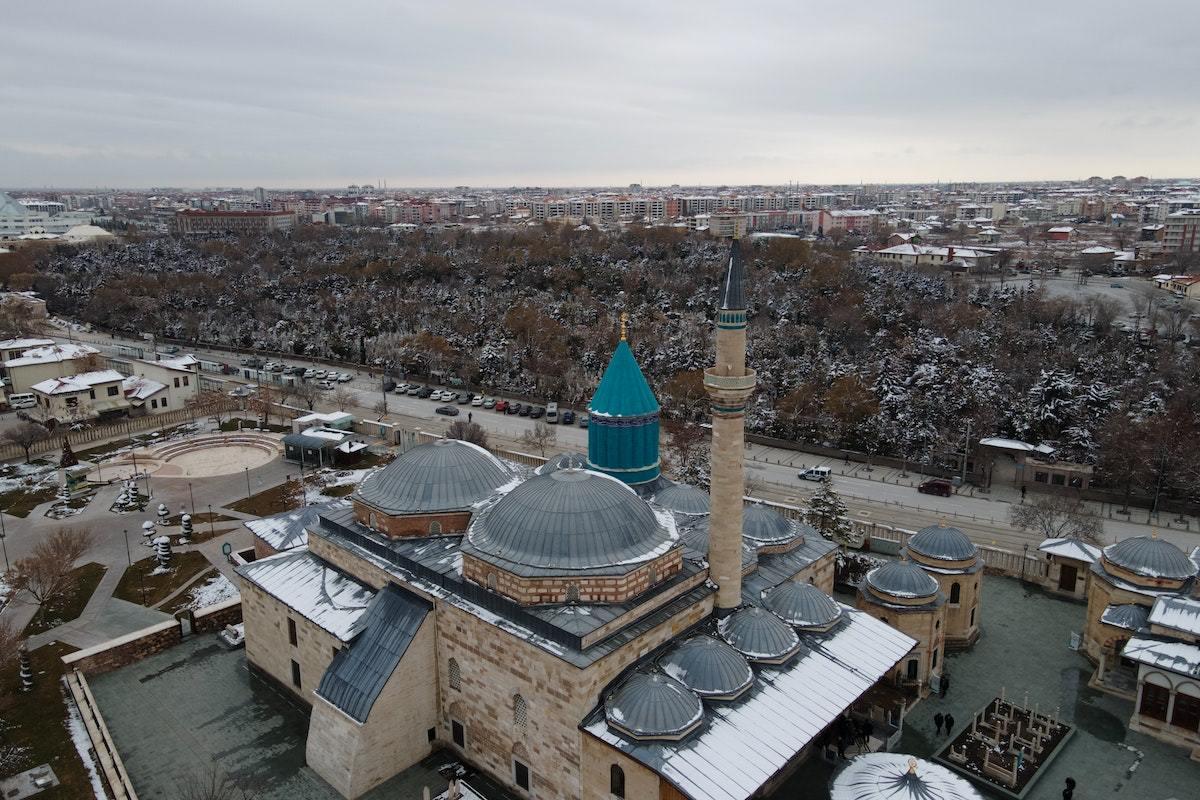
Housed in a former convent of whirling dervishes, this museum exhibits mainly Islamic art objects. Decorated with a tower covered with green ceramics and a fluted dome decorated with turquoise tiles, the monument is absolutely magnificent.
Konya and its famous museum immerse travelers in a mystical atmosphere. Between the mosques, the museum, and the mausoleum, the city is a real jewel and an open-air museum where religion and traditions are very important.
16. Sumela Monastery
Sumela Monastery is a Greek Orthodox monastery dedicated to the Virgin Mary in the northeastern province of Trabzon.
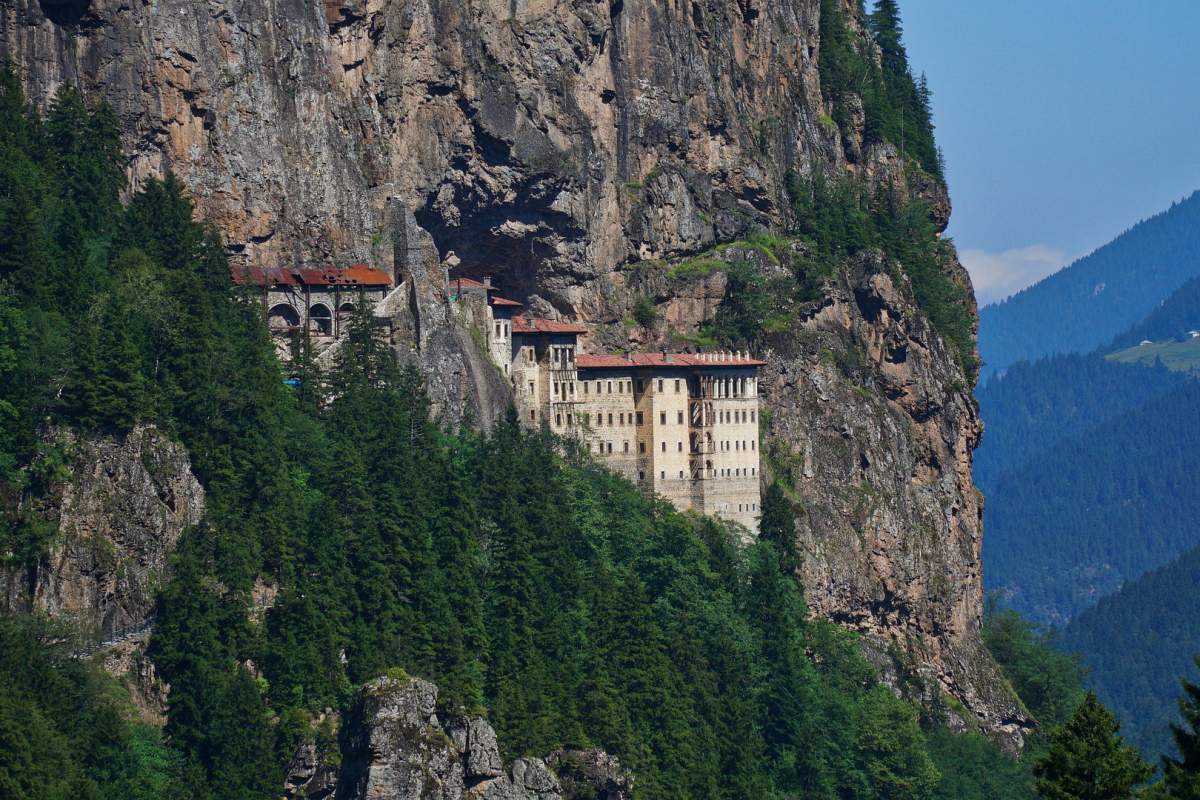
It is located at an altitude of about 1200 meters, at the foot of a steep cliff within the Altındere National Park. Built around the year 386, the legend states that after the discovery of an icon of the Virgin Mary on this mountain, 2 Greek monks decided to establish a monastery there.
Now, the site has become a museum and a popular Turkish landmark because of its steep location and the views it offers of the surrounding landscape.
17. Ani
Not far from the Armenian border, the city of Ani was once the capital of the Armenian kingdom. On a vast desert plateau that seems to stretch endlessly, the ruins of the ancient monuments of the capital are still standing.
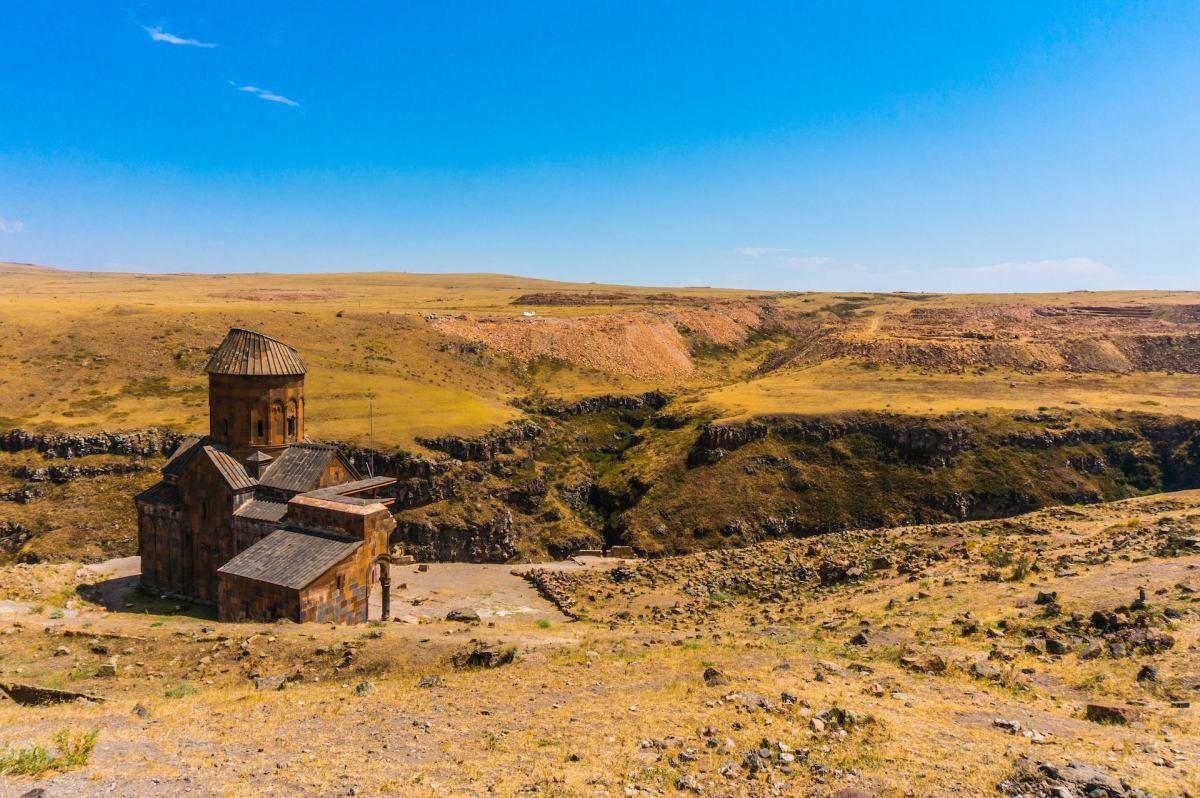
In 961, King Ashot III made Ani the capital of the Bagratides, which was once populated by more than 100,000 people. In the middle of the 11th century, the Byzantines seized the city to leave it in the hands of the Seljuks in 1064. It was finally abandoned after the Mongol invasions of the 13th century.
Ani’s ruins can now be visited and give an idea of the importance of the former royal capital. Surrounded by thick ramparts, the ruins consist of well-preserved churches with stunning frescoes, a fortress, a mosque, and a cathedral.
18. Troy
The city of Troy, made world-famous by Homer’s Illiad and a few movies, is home to an amazing archaeological site that bears witness to 4000 years of history.

The site required no less than 24 excavation campaigns that began in 1870 and were extended over 140 years. Archaeologists discovered 11 gates, a stone ramp, the lower parts of 5 defensive bastions, and other remains that can be visited.
Visiting this site will allow you to learn more about the Trojan heroes Hector, Paris, Helen, Achilles, and Ulysses, the hero behind the wooden horse as a plan to invade the city, a replica of which is displayed at the entrance.
19. Myra Ruins
Located in the Antalya region, Myra is an ancient city famous for its Lycian and Roman remains.
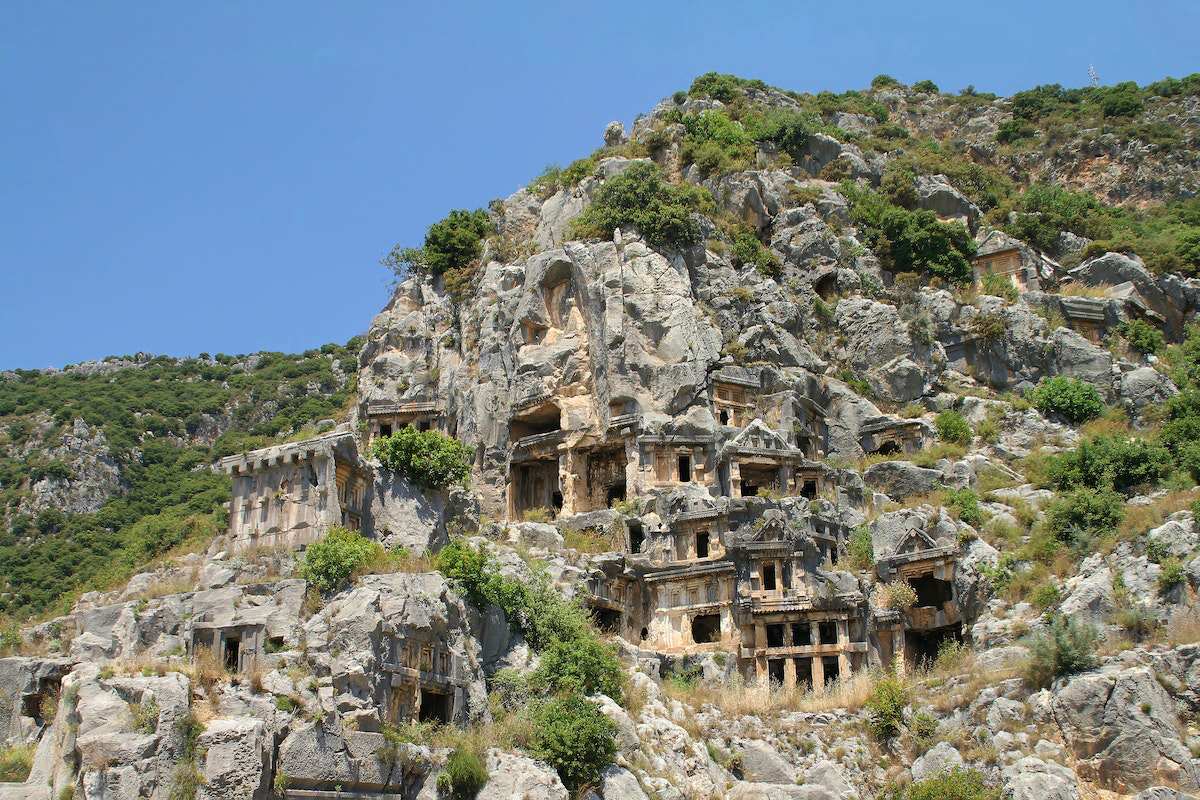
Myra developed in the 2nd century during the Hellenistic and Roman period thanks to its port, Andriake. Byzantine, Seljuk, then Ottoman, the city declined in the 6th century, following the silting up of the Miros river, thus cutting it off from easy access to the sea for goods. Deserted before disappearing completely, it was only rediscovered in the 19th century.
Of its former glory, only the theater and the 2 rock necropolis remain. Many visitors go there every year to discover these remarkable tombs carved in the cliffs.
20. Kaunos Tombs of the Kings
Located in the southwest of Turkey in Caria, less than 10km from the Mediterranean coast, Caunos is an ancient Greek city known for its impressive series of rock tombs carved into the cliff.
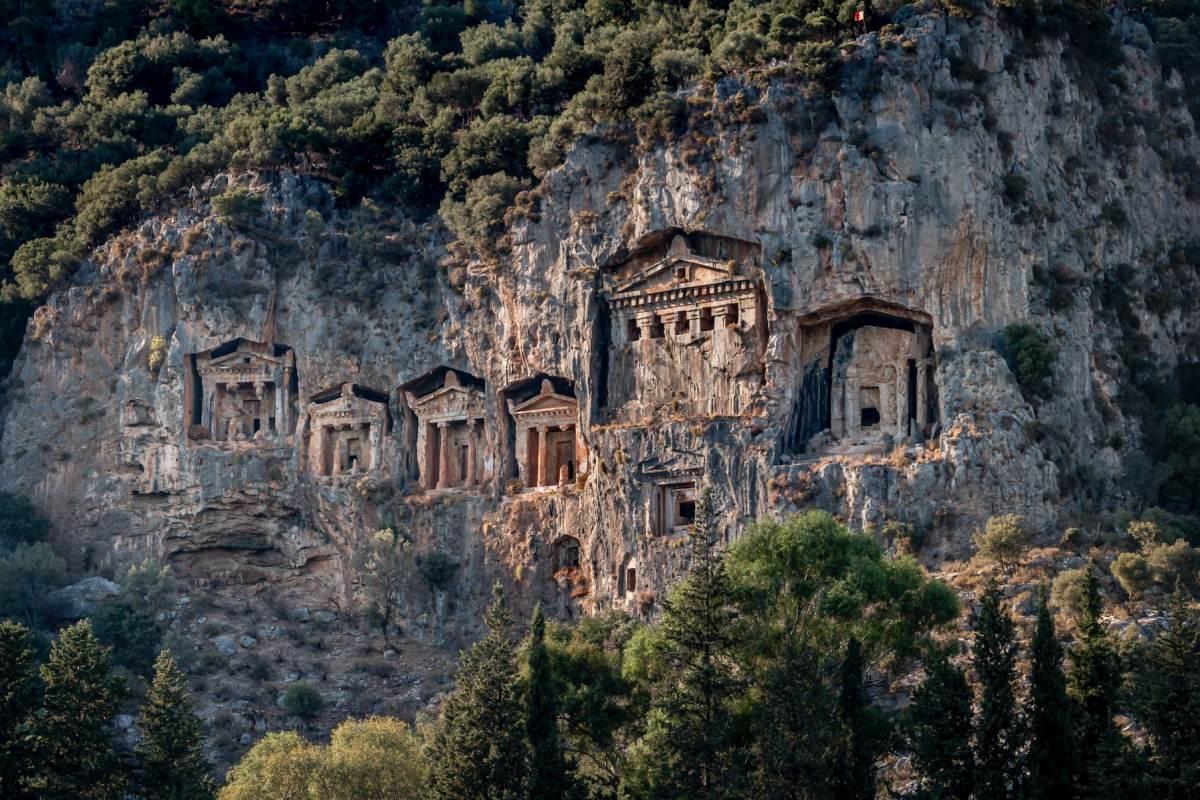
The origins of Kaunos date back to the 10th century BC when it was a port. Dried out, it was abandoned during the Hellenistic period, became Christian, and then Muslim since the 13th century.
Access to the site requires taking a small kayak from the pretty town of Dalyan to reach the shore of Caunos and then climbing on foot for 30 min. Once at the top, you won’t be disappointed by the view.
21. Aphrodisias
This archaeological site stands out due to its pretty remarkable state of preservation, despite its age and the fact that it is in an earthquake zone.
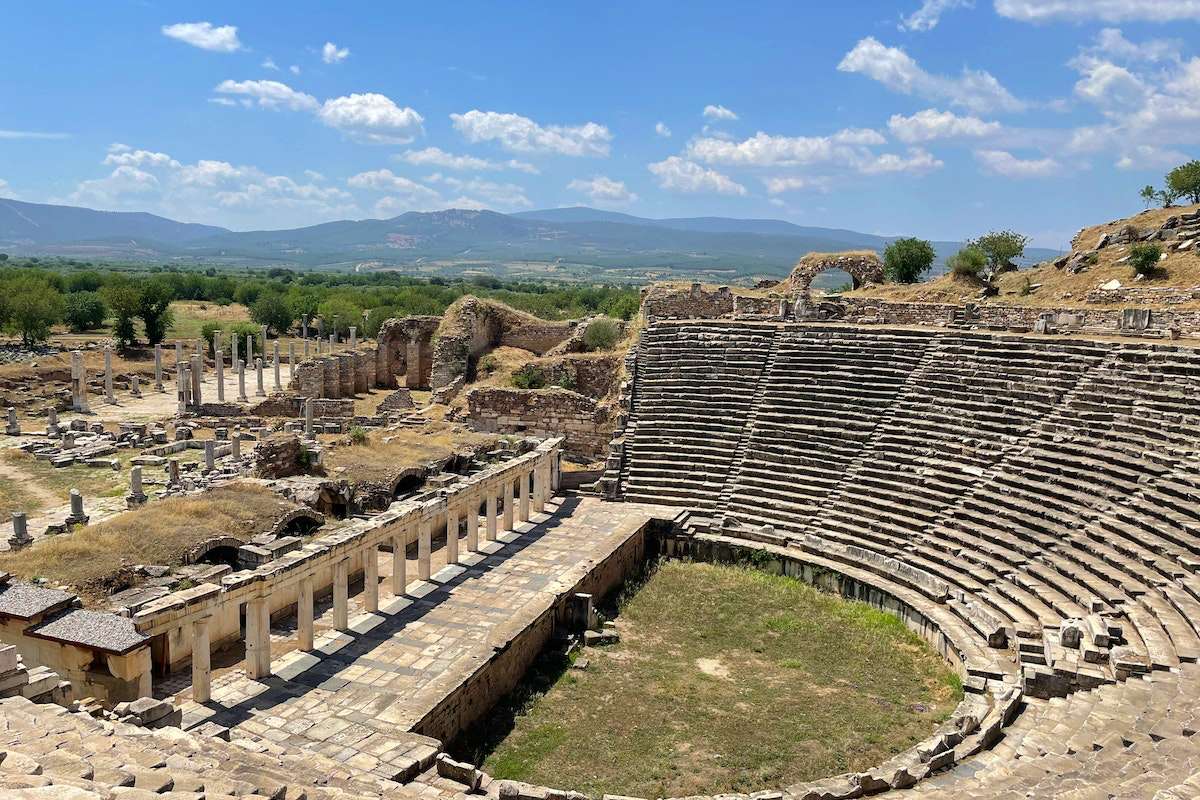
Indeed, many monuments are clearly recognizable, especially the hippodrome and the amphitheater. Dedicated to the goddess Aphrodite, the ruins of the sanctuary built in her honor are still visible.
This Greco-Roman site dates back to several centuries BC and grew strongly until the 4th century when an earthquake destroyed a part of the city. Buried for centuries and covered by a village, it was only rediscovered in the 20th century.
22. Selime Monastery
Located in the Ihlara valley in Cappadocia, Selime Monastery’s atypical architecture is not what you would expect from a Christian monastery.
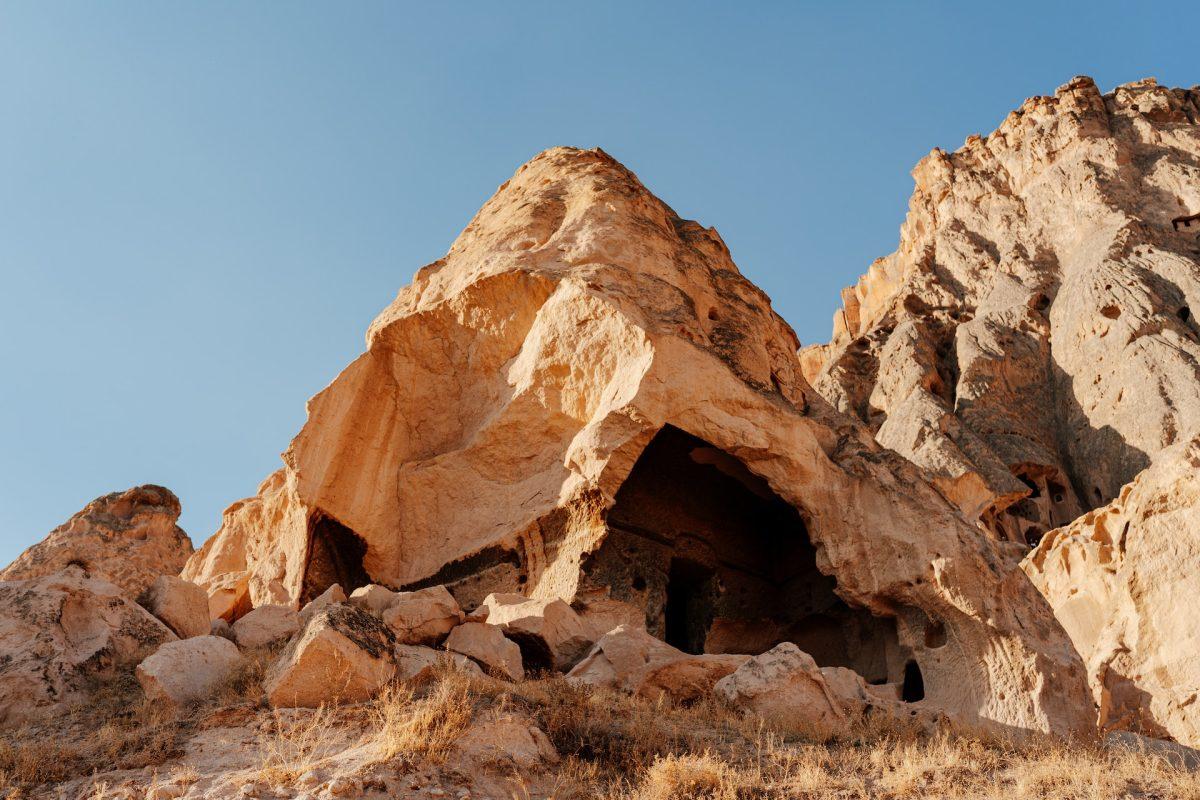
It is a magnificent monastery entirely cut out of rock, dating from the 8th century, with interior frescoes dating from the end of the 10th century. One of the key facts about Selime is that it has hosted many prominent clergymen who were trained there.
The dimensions of the monastery are amazing, cathedral-like, with columns and arches carved directly into the tuff. One of a kind, it has a large kitchen with a high fireplace, a church surrounded by a gallery, and stables with stone troughs. As a bonus, you can enjoy a breathtaking view of the valley from the Selime Monastery.
23. Göreme Open Air Museum
The Göreme open-air museum is a real curiosity in Cappadocia and a must-see landmark of Turkey that shouldn’t be missed under any circumstances!
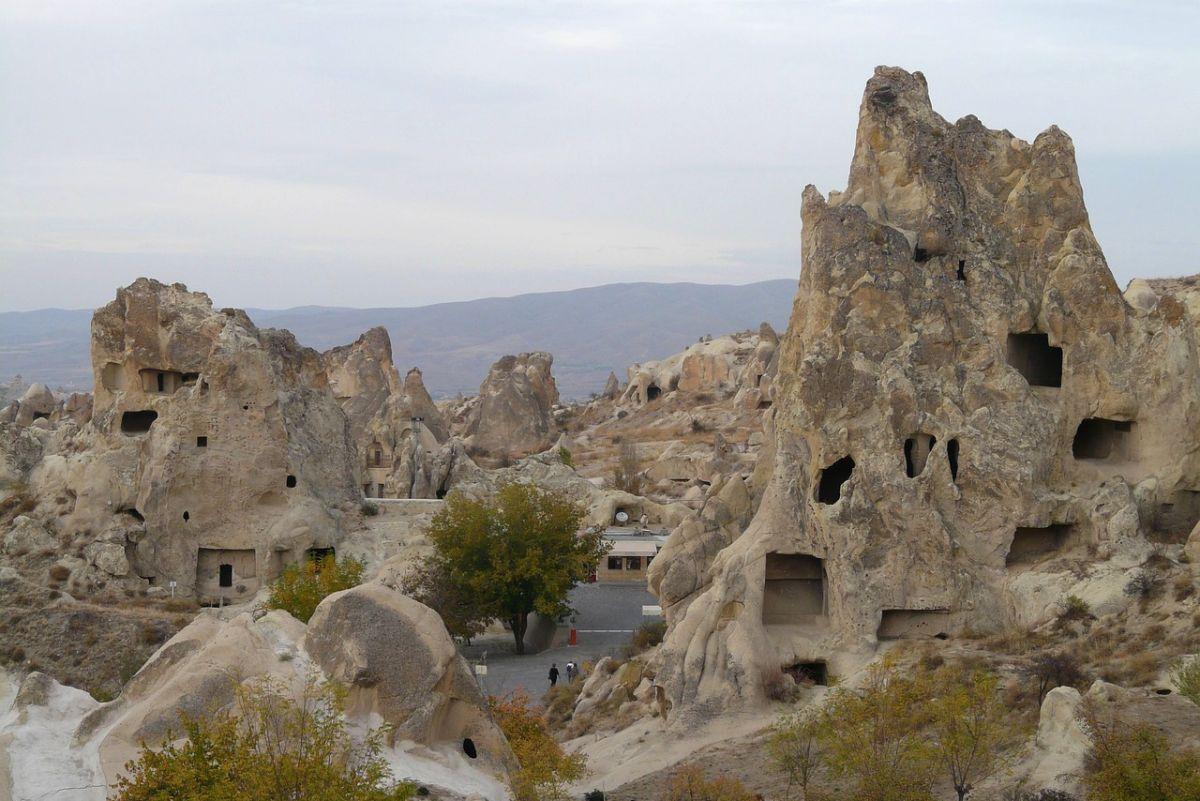
Listed as a UNESCO World Heritage Site, this exceptional place is home to a large number of churches carved into the rock in the Middle Ages by Christian monks.
You can walk all around the site and discover a lot of houses cut in stone as well as incredible frescoes inside thousands-of-years-old churches. The landscape all around is also breathtaking, perfectly blending with the human constructions.
Famous Natural Turkey Landmarks
As you may have noticed, Turkey is a great country with an unmatched historical and cultural heritage. But on top of that, the country has impressive natural assets that make Turkey a destination to go to at least once in a lifetime.
Let’s discover 12 of Turkey’s best natural wonders.
24. Pamukkale
Pamukkale is undoubtedly one of the most beautiful natural jewels of Turkey. This site is located in the southwest of the country, more precisely in the wonderful valley of the Menderes River.
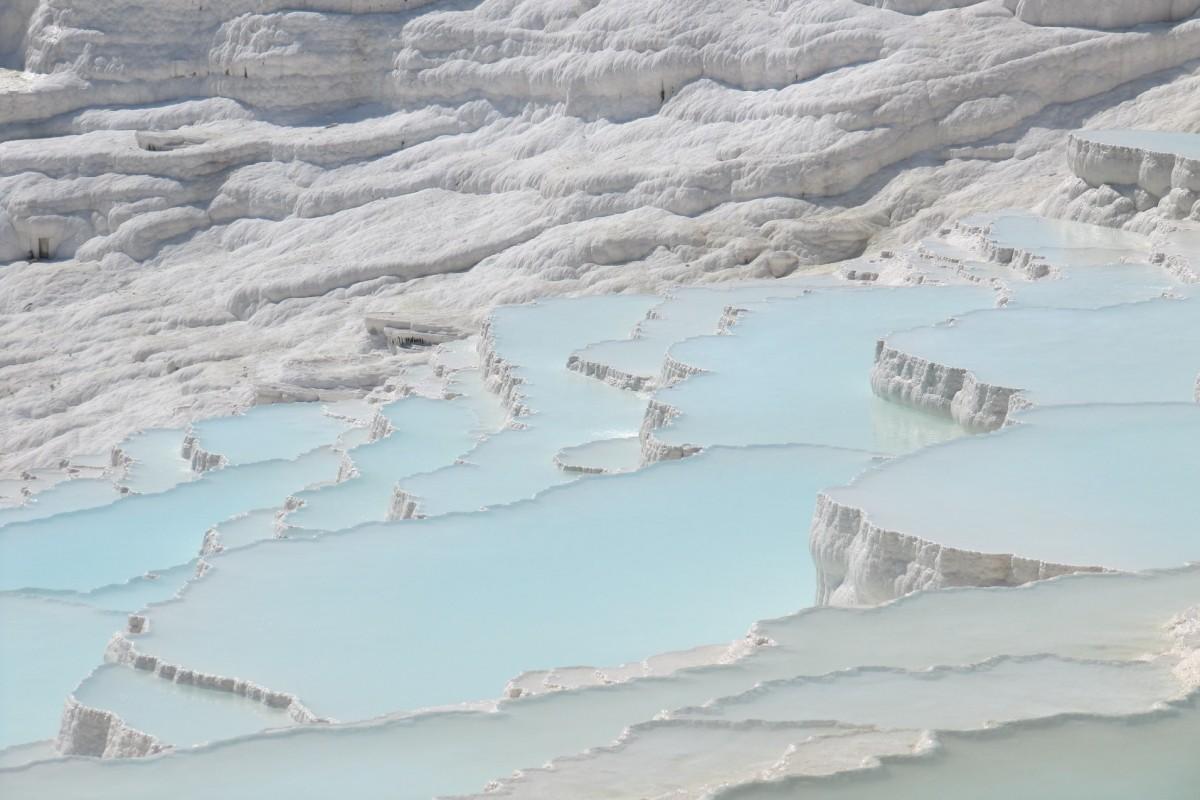
Pamukkale means “cotton castle” in Turkish and it is true that it looks like it. This amazing geological formation is caused by the surrounding hot springs which cover the Pamukkale hill with limestone that turns white after evaporation. Many basins forming natural pools follow one another and overflow when filled, creating these petrified waterfalls.
This fragile landscape is extremely protected, but you can visit it in various ways: by following the marked paths, by bathing in the pools open to the public, or by hot air balloon.
25. The Fairy Chimneys of Cappadocia
The Fairy Chimneys give Cappadocia its reputation. In the heart of Turkey in the Göreme National Park, these strange geological formations, which give the landscape a fantastic look, attract tourists from around the world.
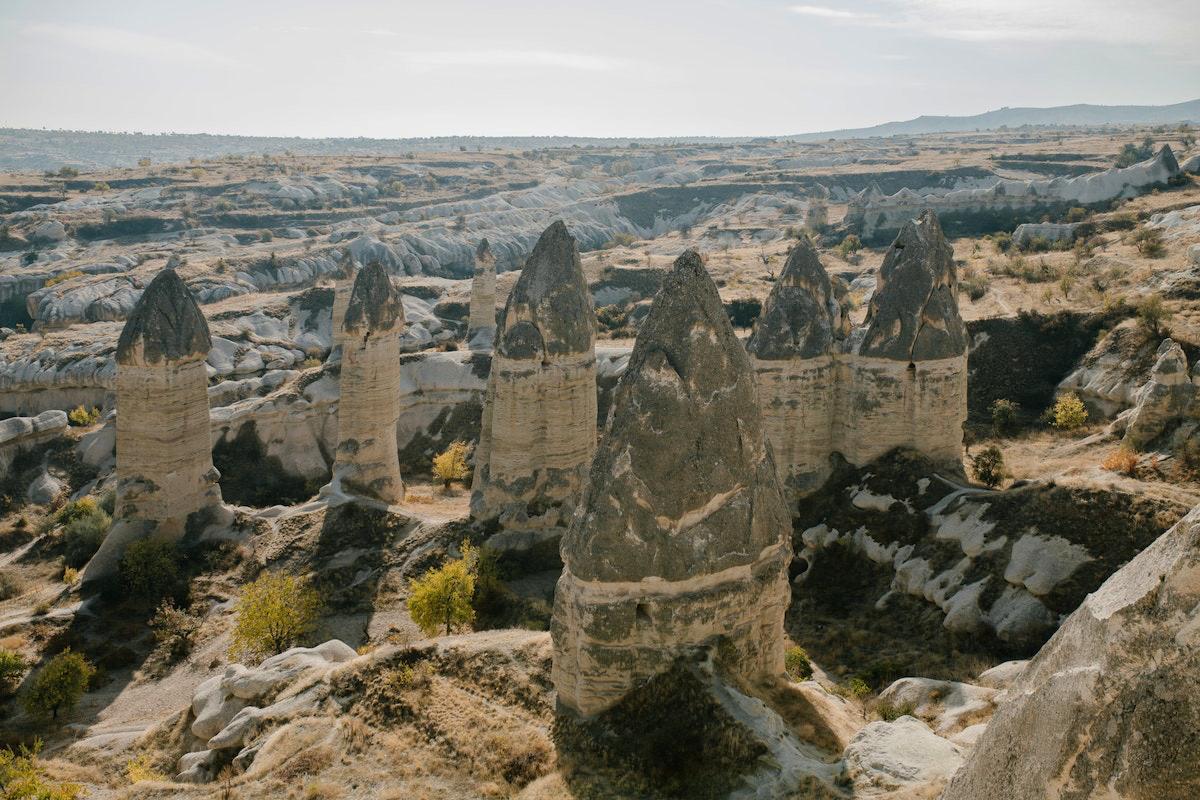
More than 10 million years ago, 2 volcanoes erupted and covered the Anatolian region with layers of lava. The wind and water sculpted them into thousands of peaks. The most impressive ones can reach 40 meters high!
Some of these rock columns are now transformed into hotels, perfect for an off-the-beaten-path stay in Turkey. If you dreamed of taking a hot air balloon ride, Cappadocia is the ideal place.
26. Bosphorus Strait
The gigantic metropolis of Istanbul is split in two by the Bosphorus which serves as a border between two seas and two continents.
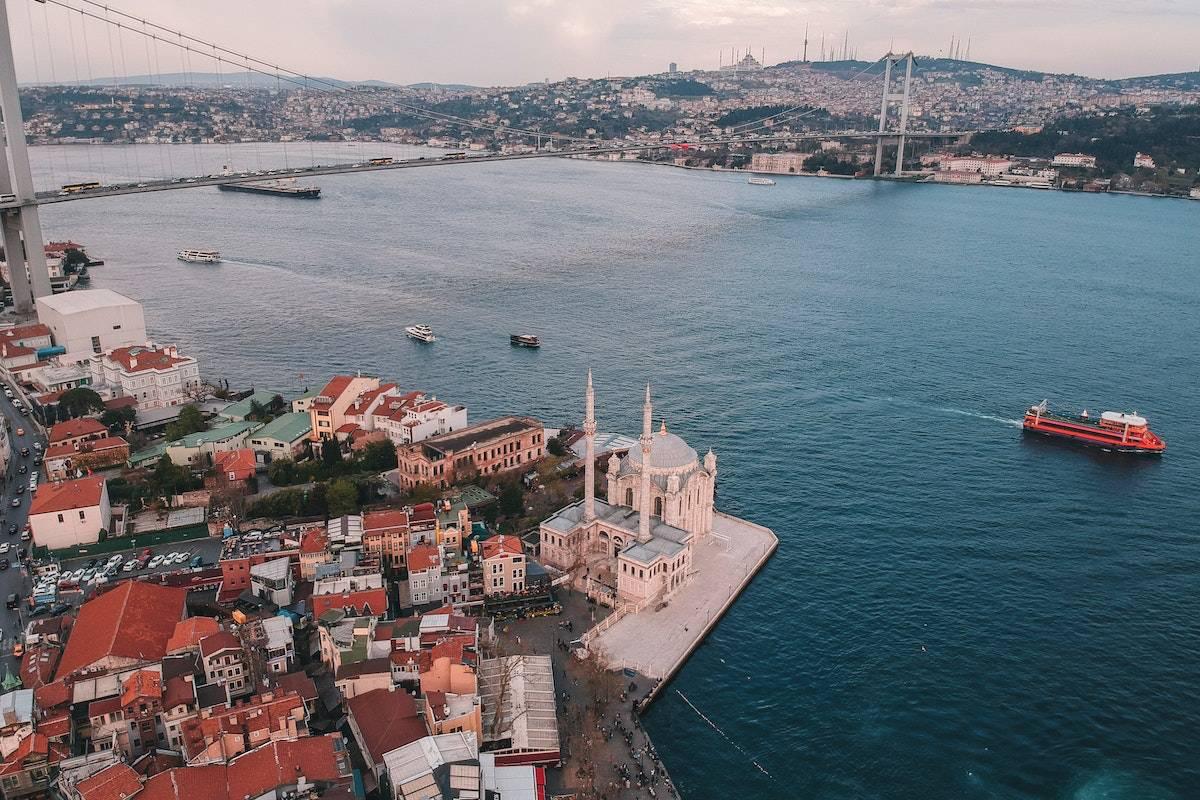
The Bosphorus Strait, which connects the Sea of Marmara to the Black Sea, is in fact an ancient valley submerged by the sea millions of years ago. Although strategic, the Bosphorus is full of charm and surprises as its banks are lined with fishing villages, luxurious 19th-century residences, mosques, and Ottoman palaces.
If you are in Istanbul, chances are you will take a Bosphorus Ferry or visit its shores to discover the most beautiful monuments of the city.
27. Mount Nemrut
In southeastern Anatolia overlooking the Euphrates River valley, there is a majestic mountain, Mount Nemrut Dağı.
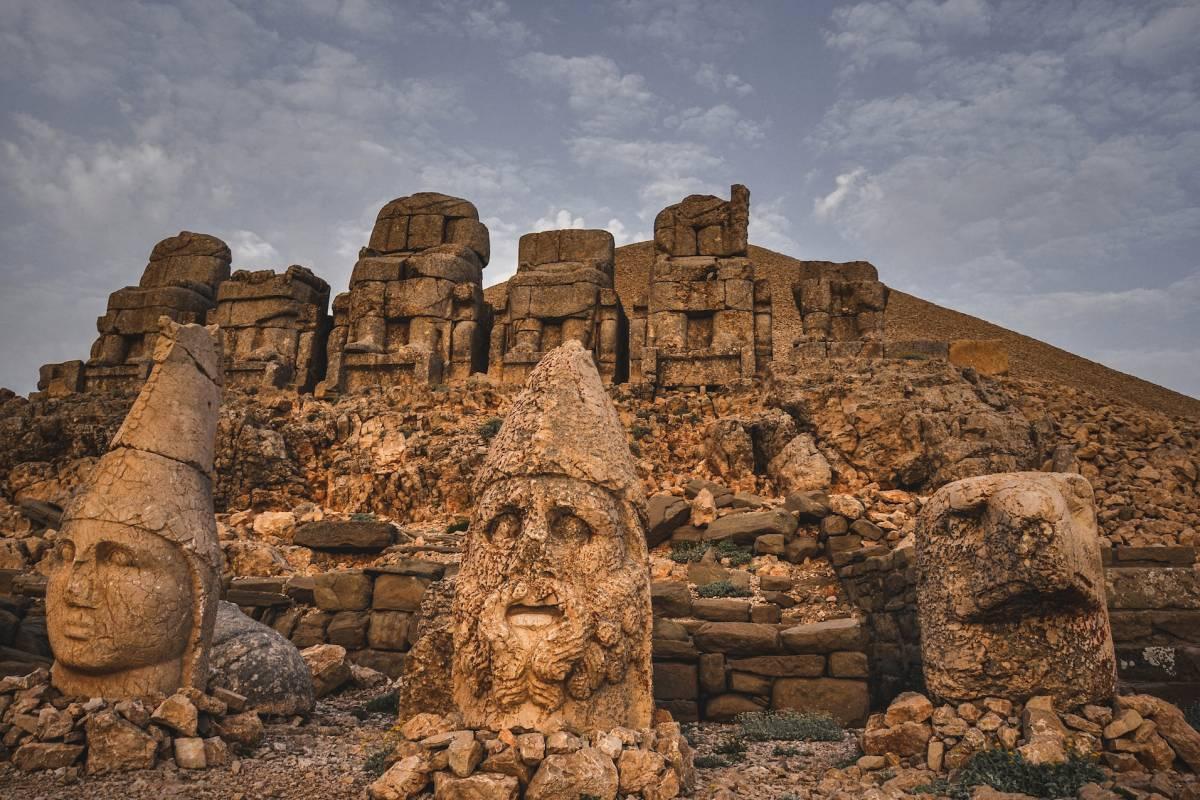
Located north of the Syrian border in the national park of the same name, Mount Nemrut which reaches an altitude of 2,134 meters is not only a natural wonder, but also a treasure of history. Indeed, this UNESCO World Heritage Site is home to the tomb of Antiochus I (king of ancient Commagene) and many statues, colossal and majestic.
From the terraces high up on the top of Nemrut Dağı, the view of the area is breathtaking. You will still need to climb for 2 days or drive for 7 hours from Cappadocia to get there.
28. Manavgat Waterfalls
The Manavgat region of Antalya in southern Turkey is a beautiful place, especially its waterfall of unmatched beauty and peacefulness.
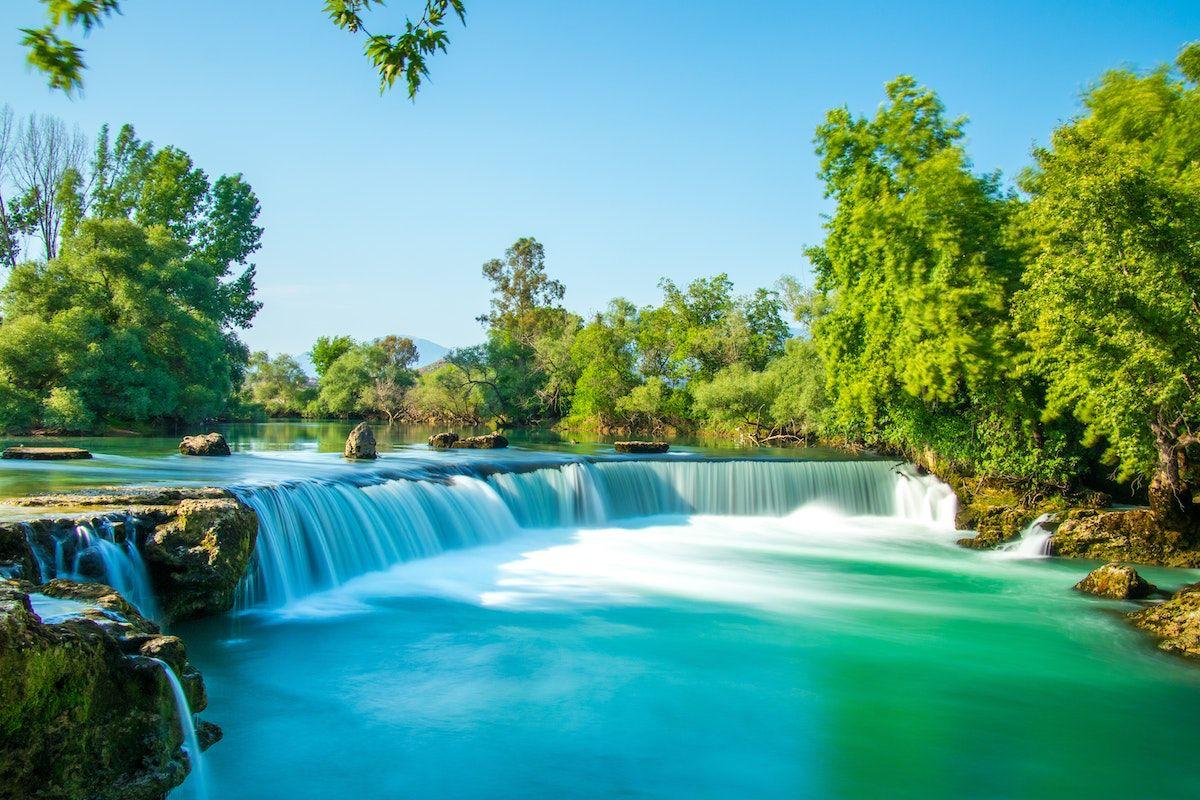
Although its 2-meter drop is small, it extends for about 40 meters and its flow is very fast which makes it an impressive and very photogenic waterfall. It is also the perfect place for water sports such as rafting or canoeing.
In addition to its waterfall, Manavgat has a very rich fauna and flora and you can observe plenty of local animals. Also, the place is well developed with a long promenade offering cafes and restaurants.
29. Nallıhan Bird Sanctuary
Located in the province of Ankara, Nallıhan Bird Sanctuary is one of the most beautiful hidden gems of Turkey.
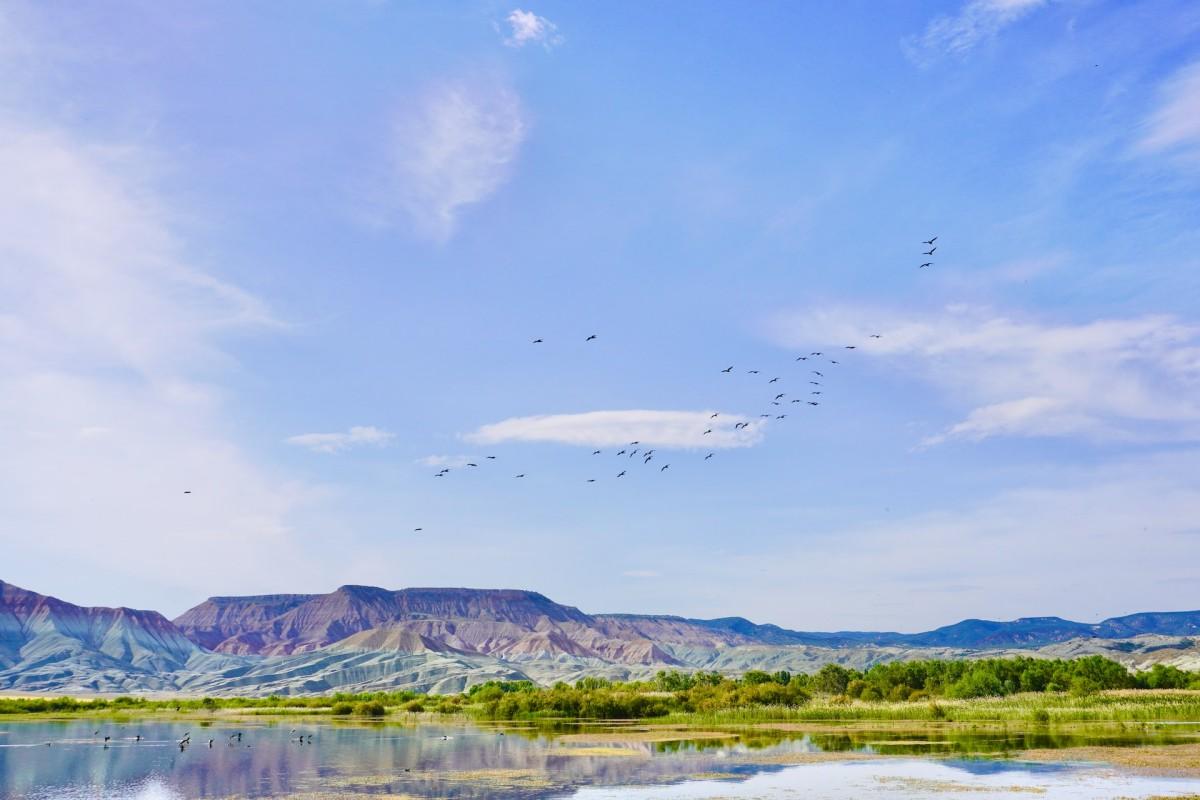
Indeed, although it is very well known locally, it is still somewhat sheltered from the crowds of foreign tourists. What makes this wild bird sanctuary an exceptional place are its colorful hills like nowhere else.
This nature reserve in the heart of the Silk Road is a hotspot not to be missed for nature lovers, hikers, and photographers.
30. Lake Van
Lake Van is the largest lake in Turkey with an area of 3,755 square kilometers and the second largest body of water in the Middle East.
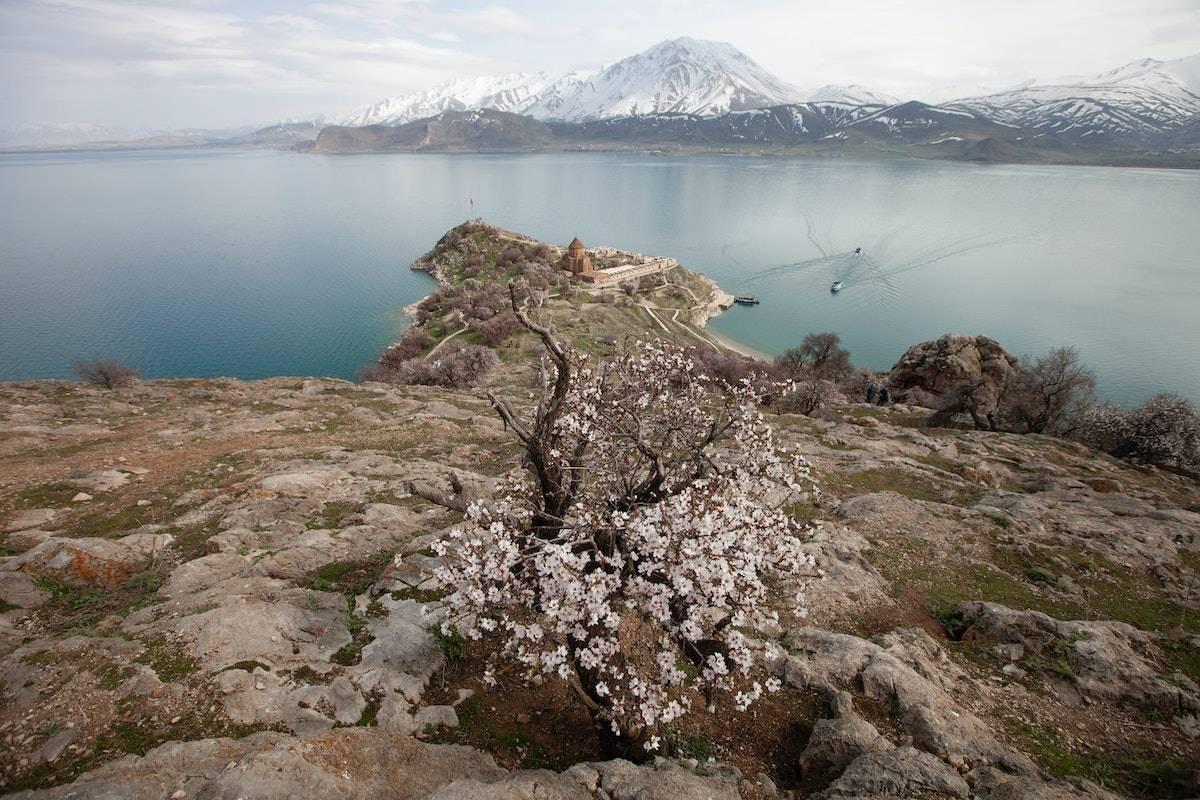
Located at an altitude of 1,700 meters in the far east of the country near the Iranian border, it is one of the 3 great lakes of the ancient kingdom of Armenia, along with Lake Sevan and Lake Orumieh, also known as “the seas of Armenia”.
It is a salty lake of volcanic origin fed by waterfalls and numerous streams of the surrounding mountains whose level is naturally regulated only by evaporation. Its clear water and shallow banks make it a pleasant place for swimming.
31. Ölüdeniz Blue Lagoon
The beach of the blue lagoon of Ölüdeniz appears regularly on the lists of the most beautiful beaches in the world. And for good reason: it offers a breathtaking panorama.
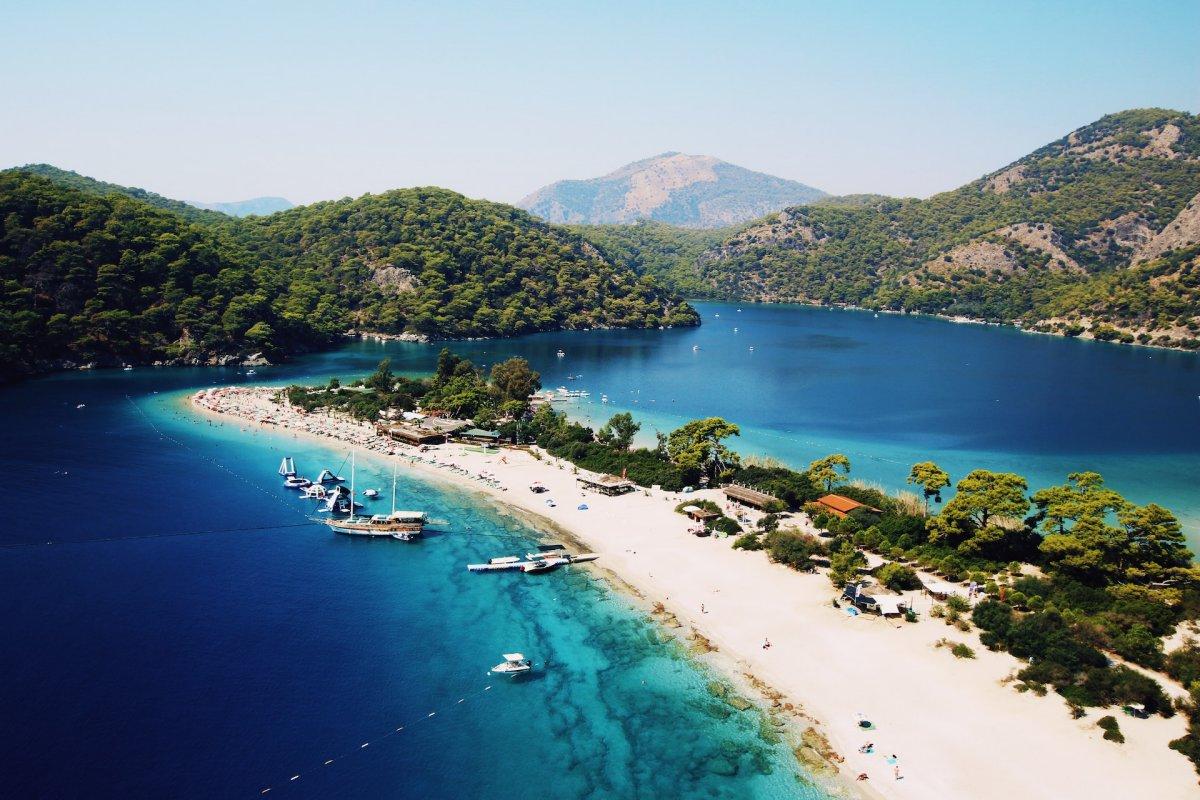
All around, a vast pine forest and mountainous landscapes. On the seaside, the water is sometimes turquoise, sometimes azure. Meaning “Dead Sea” in Turkish, this hidden lagoon in the Mediterranean Sea is not disturbed by any wave, which makes it a real paradise on earth.
While the beach is open to tourists, the lagoon is classified as a national nature reserve. Thus, access to some areas is restricted or forbidden in order to best preserve the lagoon’s natural state.
32. Patara Beach
Stretching over 18 kilometers in Kalkan in southern Turkey, Patara counts among the longest beaches in the world. Covered with fine sand and bordered by turquoise water, it is also one of the most beautiful.
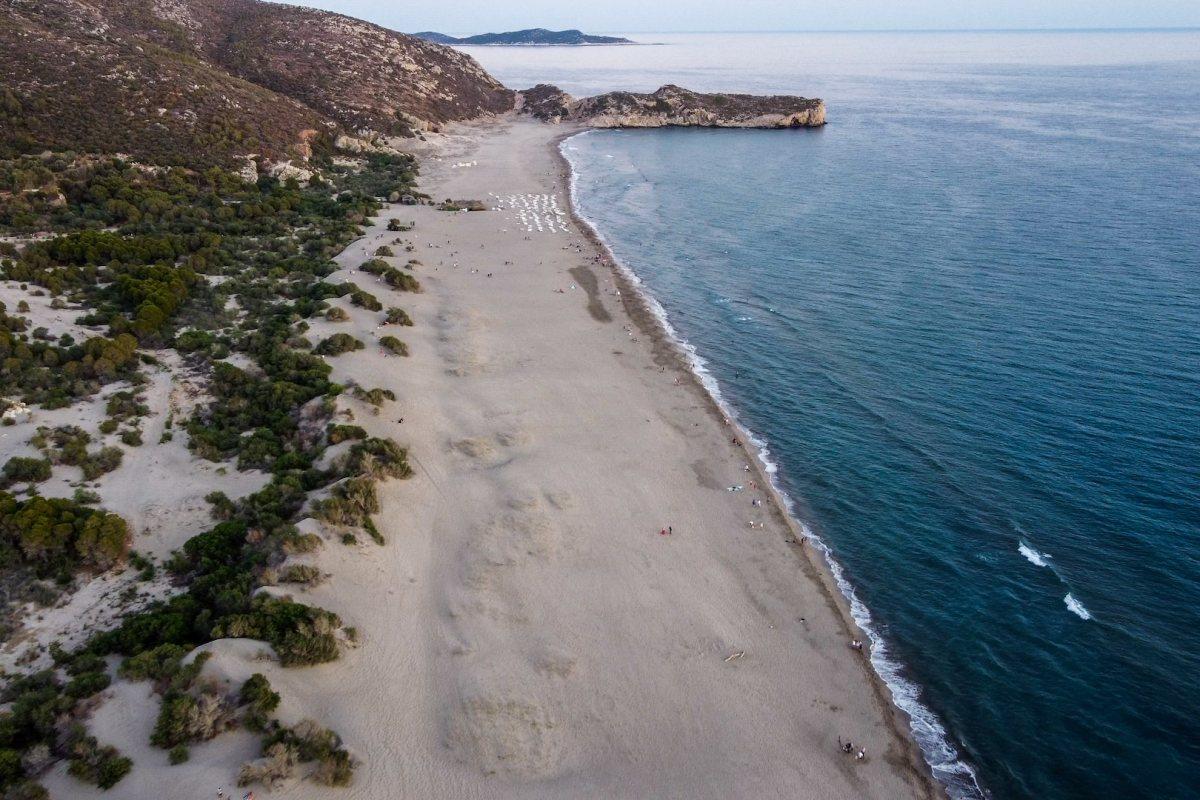
With the huge sand dunes in the background and the Mediterranean Sea in front, the landscape is definitely worth a visit. It has also served as a setting for many Turkish films.
To protect the loggerhead sea turtles (Caretta-Caretta) that have made Patara Beach their nesting place, the site is protected and there are no hotels to spoil the landscape. You can however swim for a fee, walk or ride a horse.
33. Kaputas Beach
Nestled between the towns of Kalkan and Kas in the very south of Turkey, Kaputas beach offers a spectacular sight.
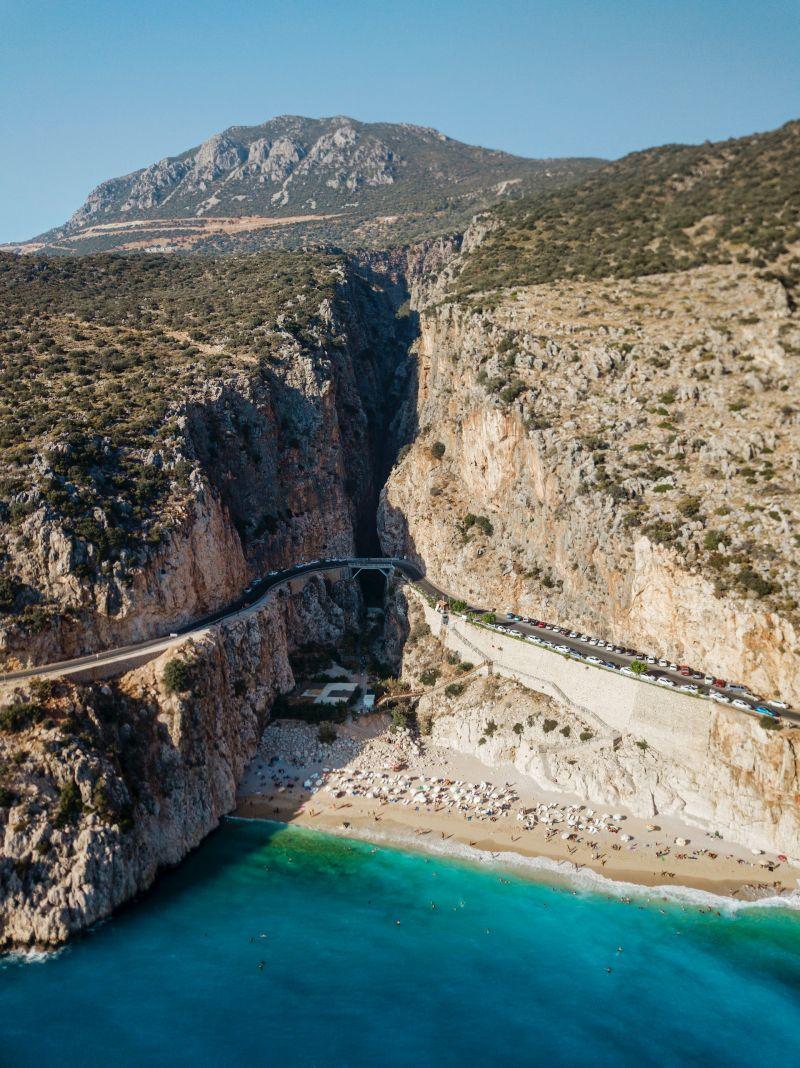
Between rocky heaps and forest, this long stretch of fine sand is a surfer’s paradise. The ideal place to learn water sports or just to sunbathe and relax under the Mediterranean sun.
Due to its geological structure, this beautiful beach is also known as Kanyonağzı plajı, “canyon mouth beach” in Turkish. To reach it, you will have to go down 190 steps, but mostly climb them back up!
34. The Burning Flames of Chimaera
Mount Chimaera also called Yanartas is located in Cirali, in the south of Turkey about 80 kilometers from Antalya.
On this fascinating site, small flames emerge naturally from cavities in the ground. According to legend, these flames are at the origin of the Chimera, the mythical animal with the head of a lion, the body of a goat, and the tail of a snake. From a scientific point of view, they are methane emanations coming from the decomposition of sedimentary rocks which ignite in contact with the air.
Climbing up Mount Chimaera to the main fire pits takes half an hour on a well-marked and maintained trail.
35. Kekova Island
Located 200 kilometers off Antalya, the island of Kekova will offer you a splendid panorama. With many small islands and islets scattered in the turquoise bay, the setting is really postcard-like.
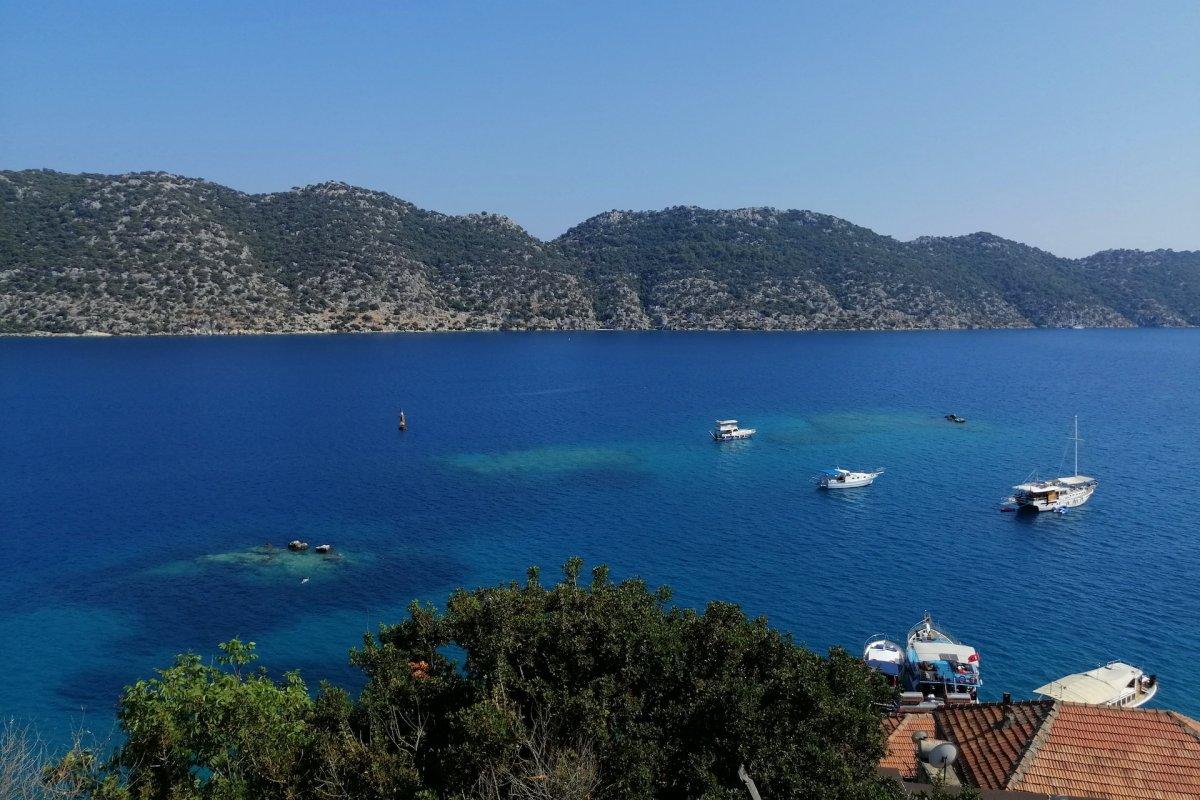
The waters of this island have a well-kept secret, visible only by boarding a boat with a glass hull: the ancient city of Simena, entirely submerged by the waters following an earthquake in the 2nd century.
In this protected area, scuba diving is strictly forbidden in order to avoid looting of this unique site, but it is very pleasant to lounge on the sand and go around the island by boat or kayak.
Turkey Famous Landmarks Map
To get the free map of the famous Turkish landmarks, simply click on the image below to open it in Google Maps. Then click on the “star” icon to save it to your own maps.
I hope you could’ve completed your travel bucket list thanks to this guide of the best natural and historical landmarks in Turkey. If you enjoyed it, don’t hesitate to share it or comment below, I love reading your feedback! 🙂
Pin this to Pinterest!
Enjoyed this guide? Then help a fellow traveler and pin it! They'll most definitely love you for it, 100% guarantee.
